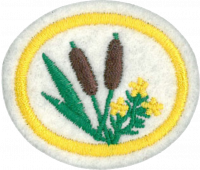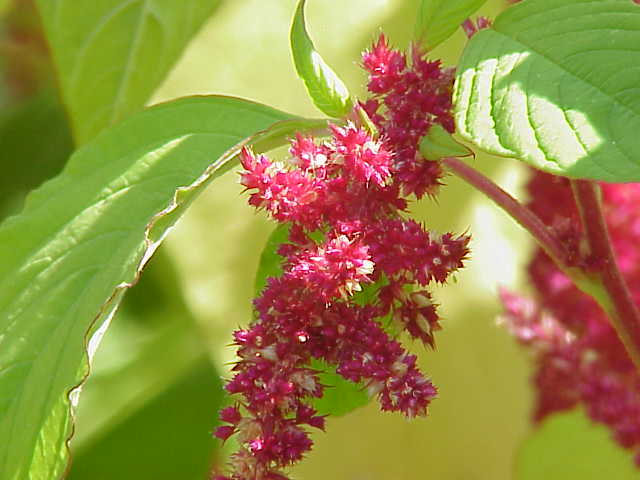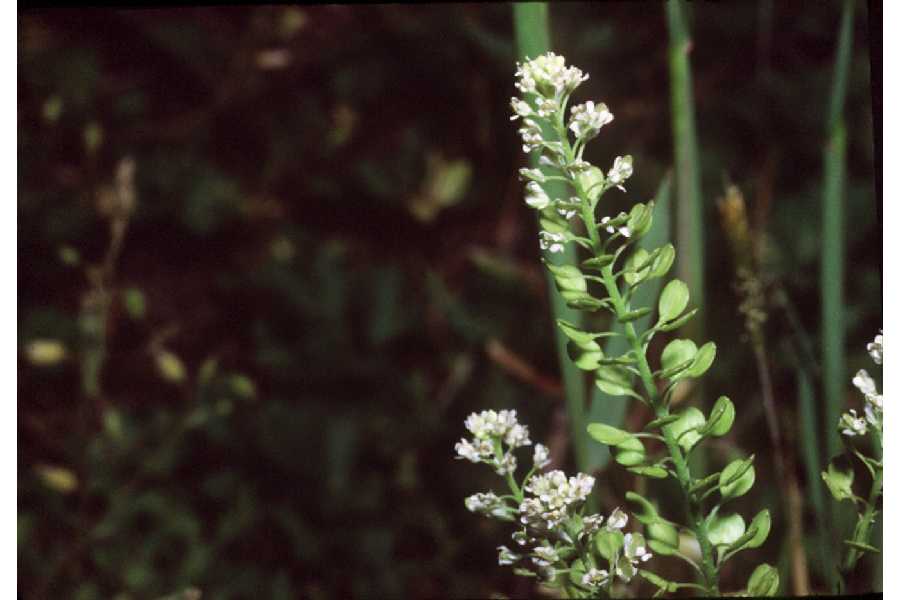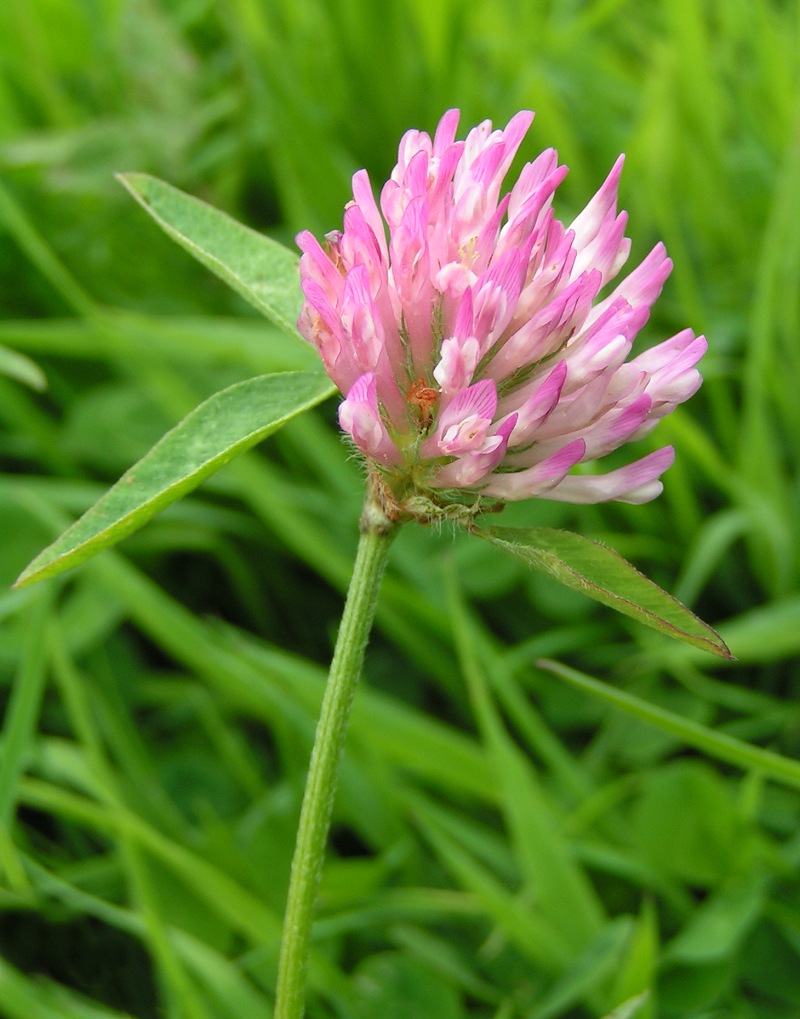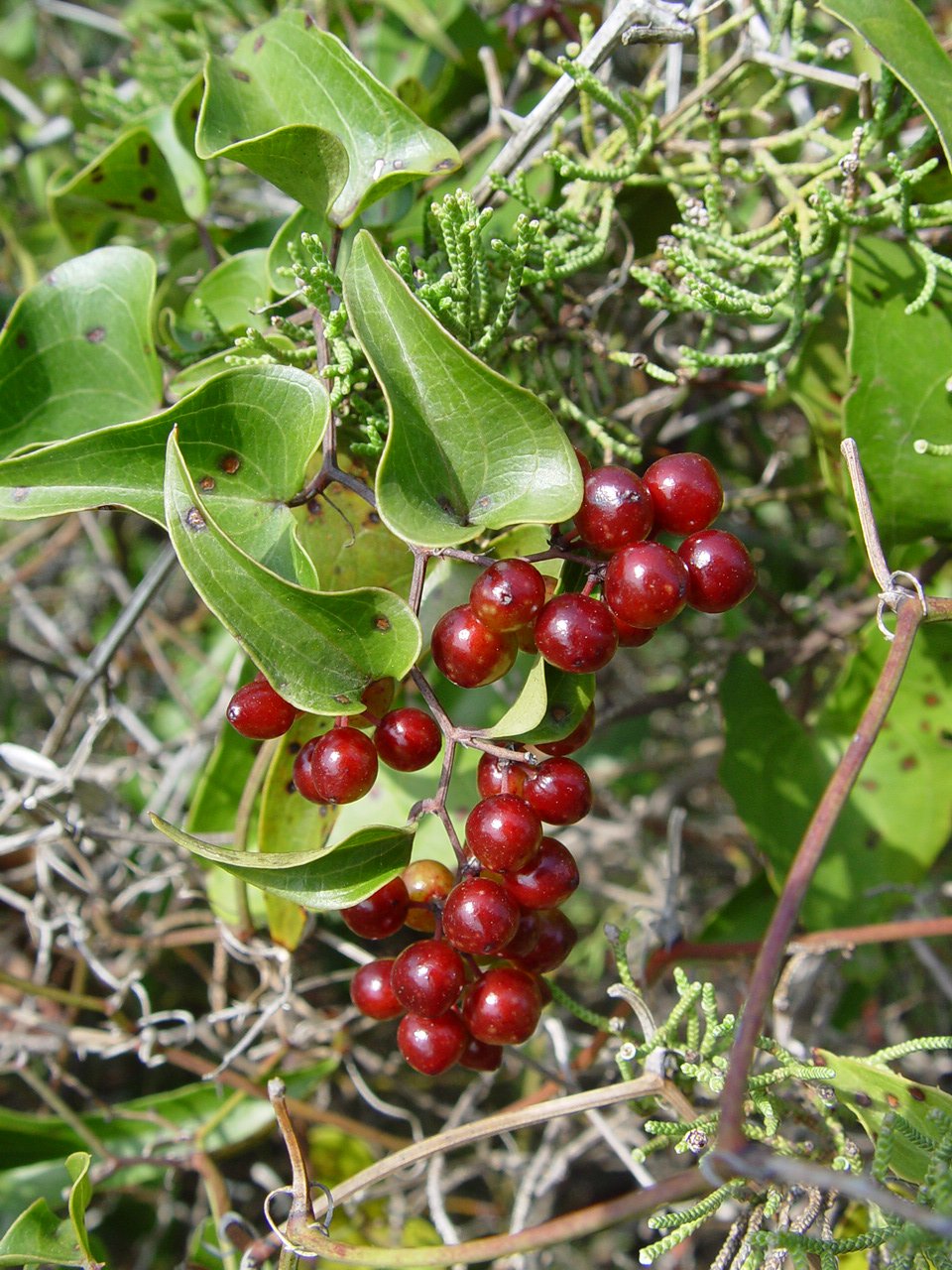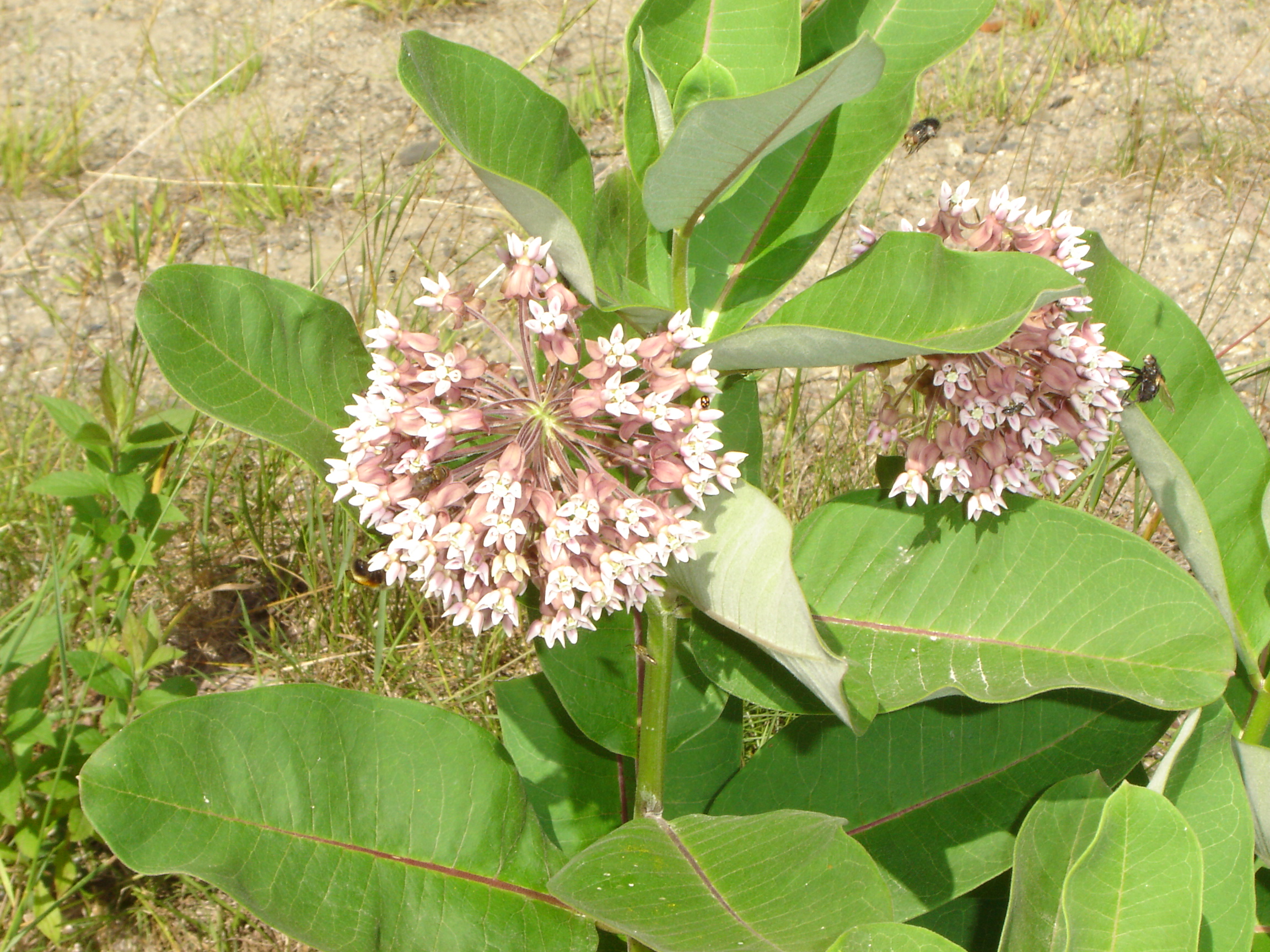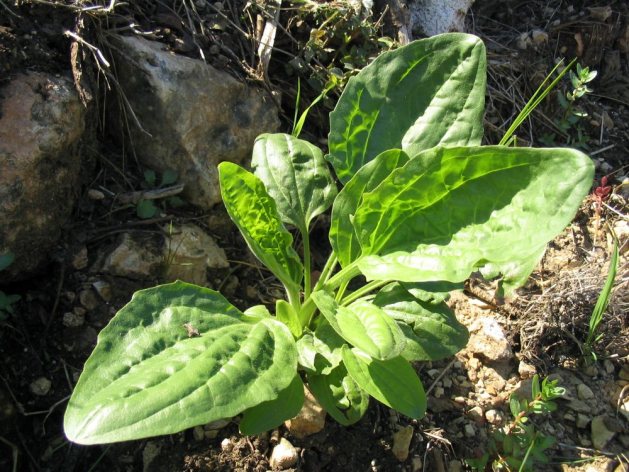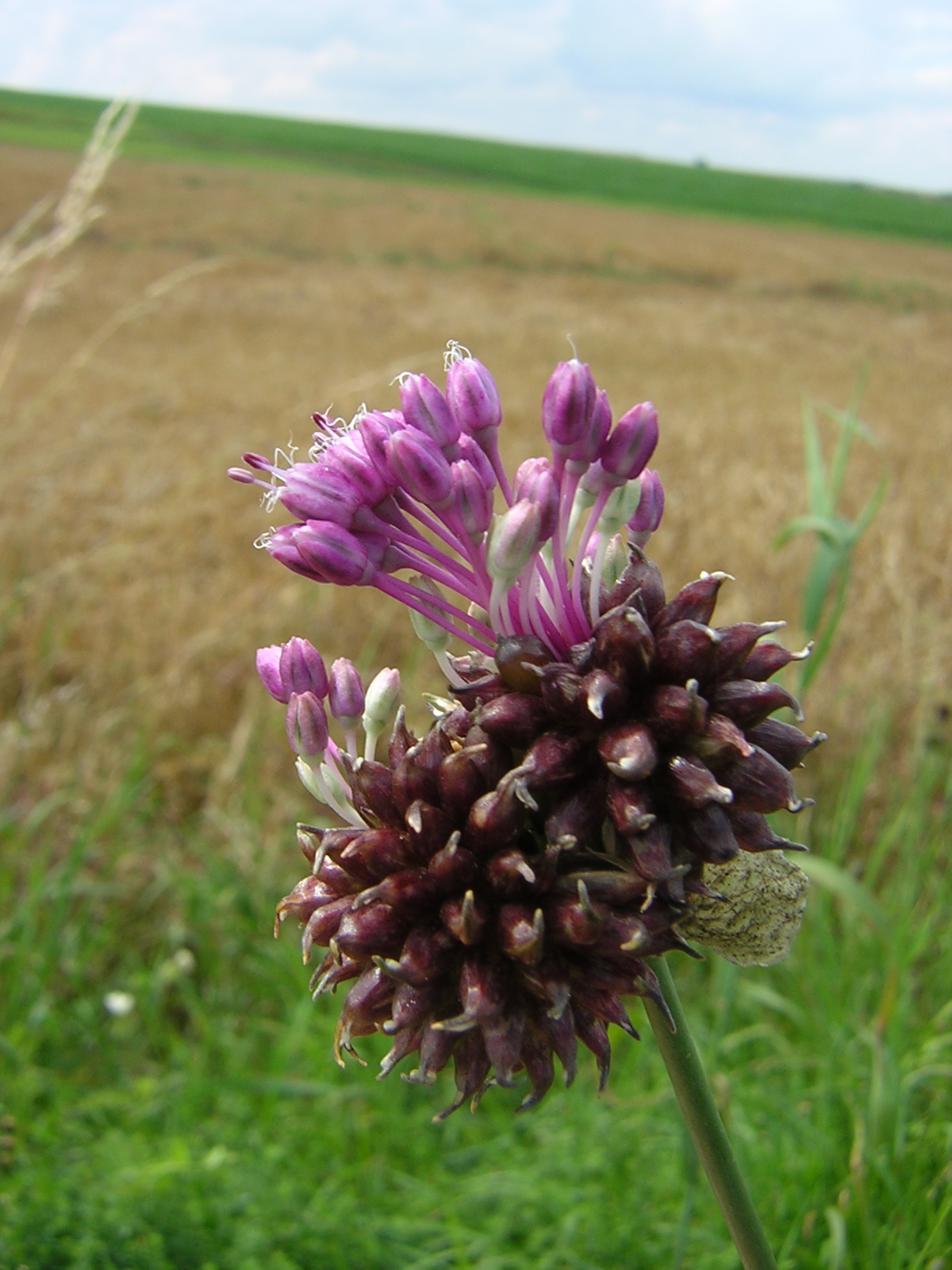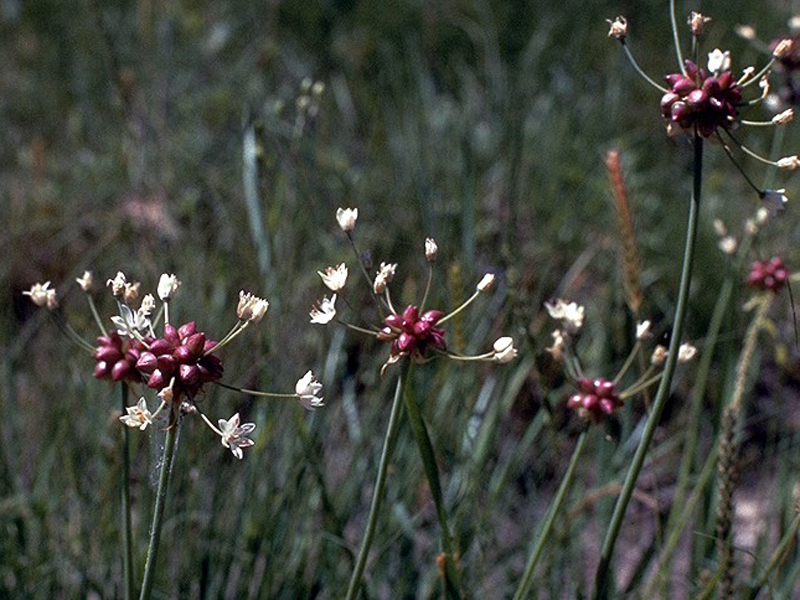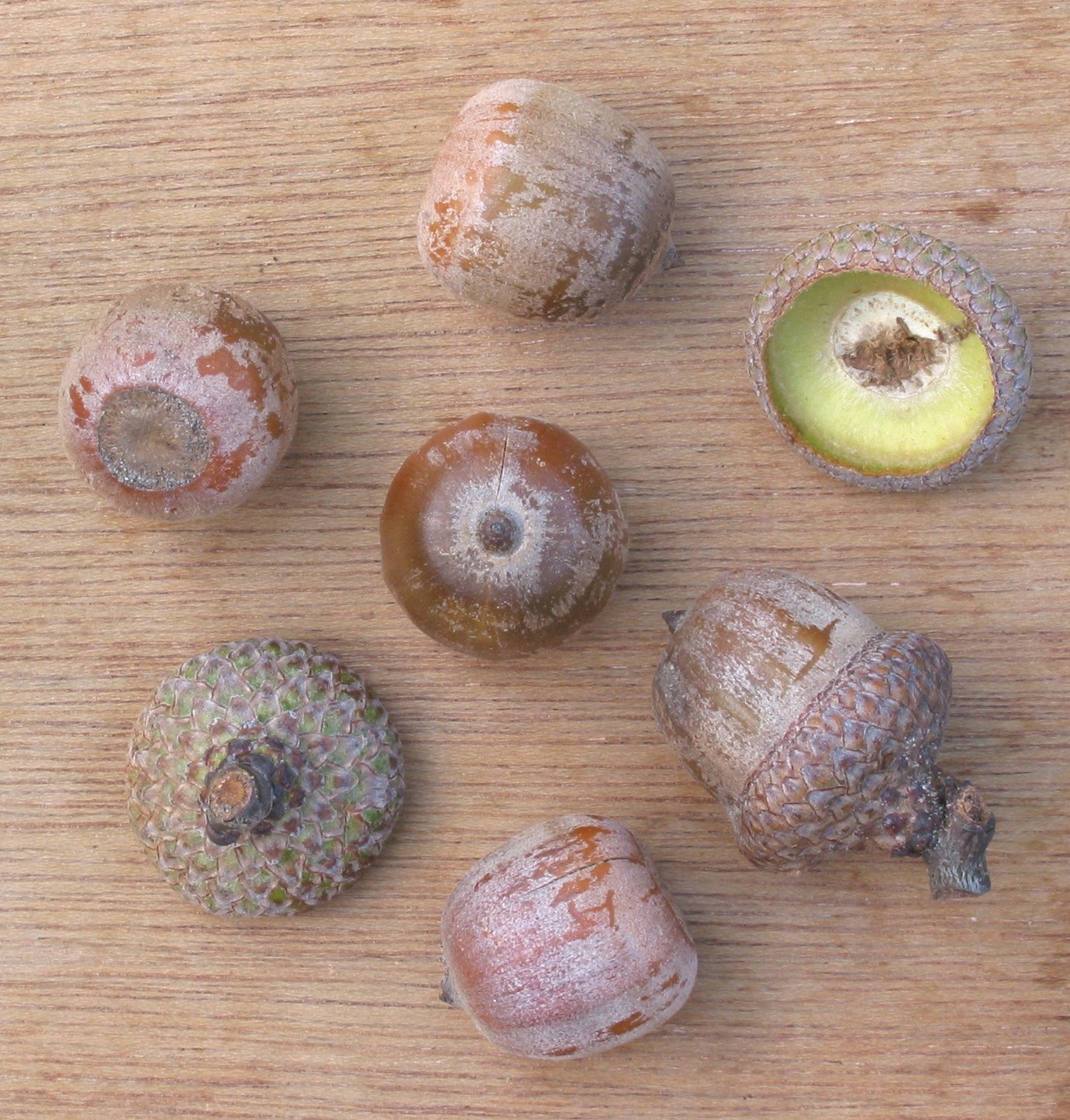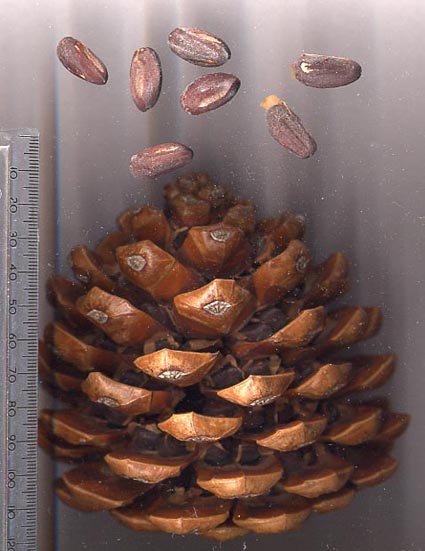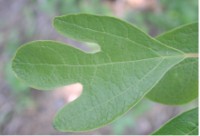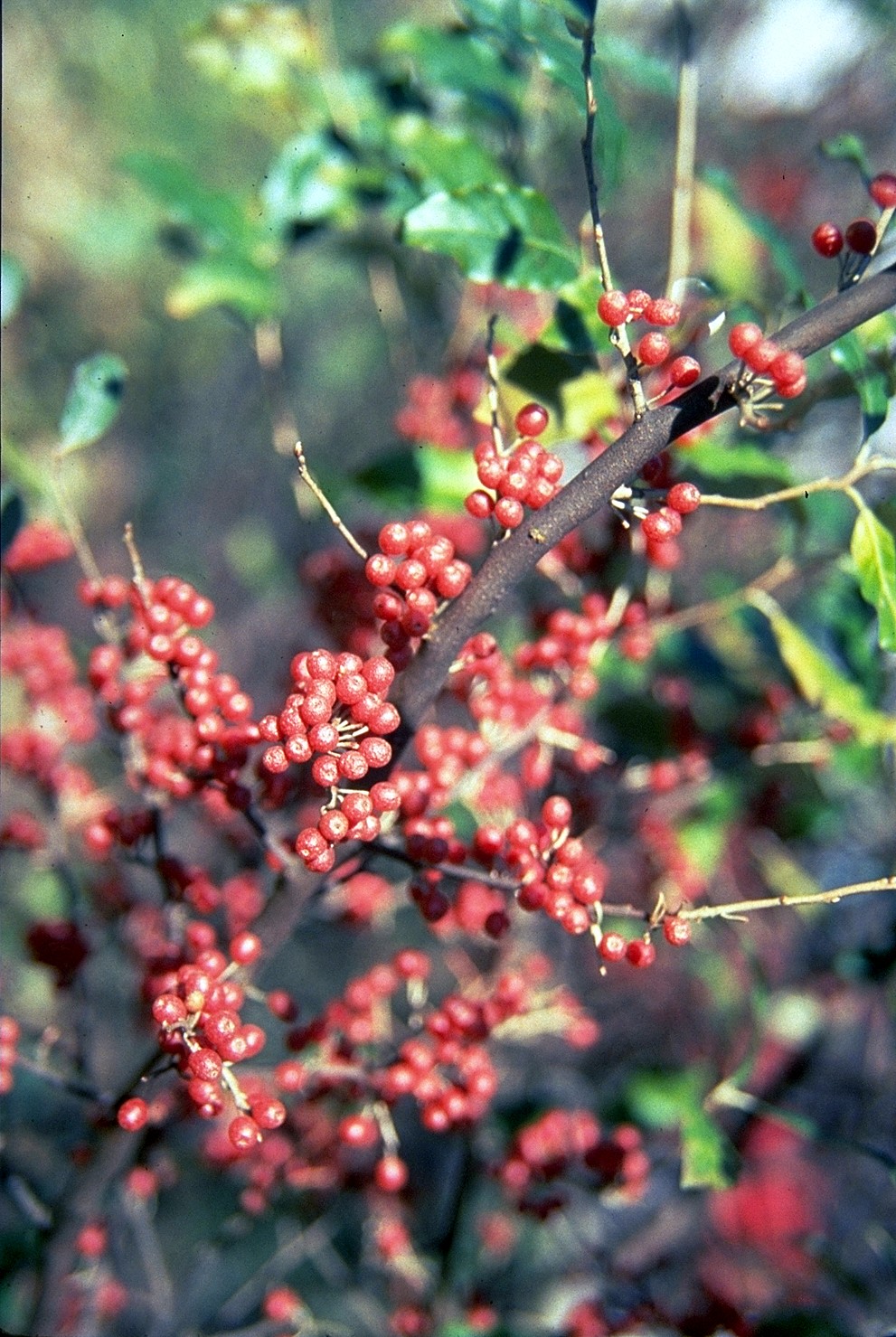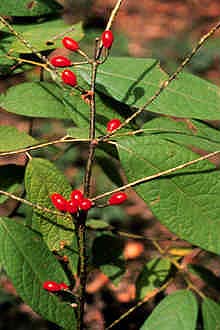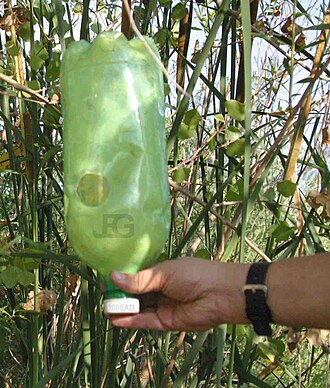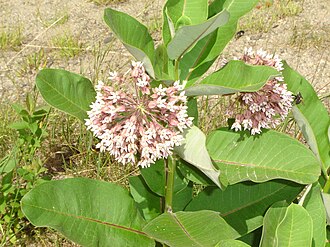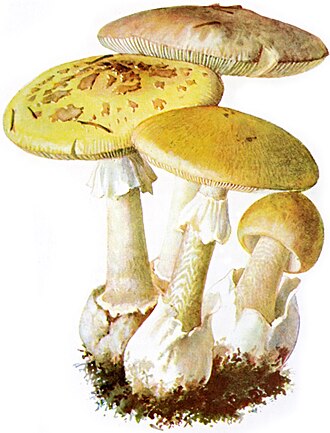Difference between revisions of "AY Honors/Edible Wild Plants/Answer Key"
| (93 intermediate revisions by 10 users not shown) | |||
| Line 1: | Line 1: | ||
| − | {{ | + | {{HonorSubpage}} |
| − | + | <section begin="Body" /> | |
| + | <noinclude><translate></noinclude> | ||
| + | ==Introduction== <!--T:104--> | ||
| + | There are at least three approaches to finding edible wild plants in your area. The first is to look through a list of edible wild plants that should be available in your area, and then go out and try to find some of them. The second approach is to go out and identify what plants are around you, determine their identity, and ''then'' find out if they are edible by looking them up in a good field guide ('''not by tasting them!'''). The third approach is to take a class, with field trips, on the subject. Having friends interested in it is helpful too. You tend to build on what each one finds out. | ||
| − | + | <!--T:3--> | |
| − | + | Because a surprising number of plants are edible, the second approach is far more likely to yield successful results. I cannot tell you how long I struggled with the first approach, searching for the likes of Jerusalem Artichokes or Groundnuts without success, all the while overlooking Hazels, Sarsaparilla, and Bunchberry. All my field guides indicated that Jerusalem Artichokes and Groundnuts should both grow in my area, but it was ''years'' before I ever saw either. I did manage to find more than 15 edible plants using the first technique, but it was indeed a ''struggle''. Sometime later I began trying to identify every plant I saw - only a few at a time of course. I found myself entering information into [http://www.realtimerendering.com/flowers/flowers.html this online key] - and when I got a hit, I would recognize that plant as one that I had seen in an edible wild plant field guide, but had not been looking for. I soon learned that many - perhaps ''half'' - of the plants in my yard are edible. Of course I also found many that are not edible, and several that are poisonous (just so you don't go around thinking that since many plants are edible, it's harmless to eat something you have not identified - '''it is not'''.) | |
| − | + | <!--T:4--> | |
| + | By attempting to identify the plants I had found rather than trying to find the plants I had identified, I found many, many more edible plants in a much shorter time (and several inedible and poisonous plants as well). It has made me a better Pathfinder. | ||
| − | + | <!--T:5--> | |
| + | If you opt to use the second approach, I urge you to review the requirements for the [[AY Honors/Flowers|Flowers]], [[AY Honors/Flowers - Advanced|Flowers - Advanced]], [[AY Honors/Seeds|Seeds]], and [[AY Honors/Seeds - Advanced|Seeds - Advanced]] honors as well. You can meet many requirements of all these honors at the same time. | ||
| − | + | <!--T:6--> | |
| + | Also in some plants one part is edible and another part is poisonous. A grocery store example of this is cherries. The fruit is very good, but the seeds contain cyanide which is deadly if you eat enough. The leaves are likewise poisonous and have been known to kill cattle. Just because one part of a plant is edible does not mean that the whole plant is good to eat, and just because a plant is listed as edible does not mean that it is not poisonous. | ||
| − | + | <!--T:7--> | |
| + | Some plants are edible only in certain stages of growth. Some examples are: Bracken fern is not edible after the fiddle head stage. Nettles can cause kidney problems in some people if they are mature (seed growing on the stalk). Yucca stalk (Hesperoyucca whipplei ) gets too many bitter saponins to be palatable as it matures into a flower head. | ||
| + | '''Be careful.''' | ||
| − | + | <!--T:153--> | |
| + | <noinclude></translate></noinclude> | ||
| + | {{ansreq|page={{#titleparts:{{PAGENAME}}|2|1}}|num=1}} | ||
| + | <noinclude><translate><!--T:154--> | ||
| + | </noinclude> | ||
| + | <!-- 1. Photograph, collect pictures of or sketch fifteen edible wild plants. Identify each plant in the wild. --> | ||
| − | < | + | <!--T:9--> |
| + | Several wild edible plants are presented here. I have included the plants with which I am most familiar, meaning that most of them are available in the Eastern United States, though we are in the process of adding more plants from the Western U.S. To make this section more universal, please add plants from your own area. This should be done by creating a separate page for the plant and including it thusly: | ||
| − | + | <!--T:10--> | |
| + | <nowiki>{{:AY Honors/Edible Wild Plants/New Plant}}</nowiki> | ||
| + | <!--T:11--> | ||
| + | Save the page, and then click on the red link you just made to create the new page (or let someone else do that - just knowing which plant to include is a great help). If you choose to add content to the new page, please use the [[Template:EWP|EWP]] template to maintain uniformity. See the discussion page of the EWP template for its usage, or look at an existing page that uses it (which would be all of the ones below). | ||
| − | {{: | + | <!--T:12--> |
| + | {{:AY Honors/Edible Wild Plants/Amaranth}} | ||
| − | {{: | + | <!--T:13--> |
| + | {{:AY Honors/Edible Wild Plants/Lepidium virginicum}} | ||
| − | {{: | + | <!--T:14--> |
| + | {{:AY Honors/Edible Wild Plants/Bladder Campion}} | ||
| − | {{: | + | <!--T:15--> |
| + | {{:AY Honors/Edible Wild Plants/Cattail}} | ||
| − | {{: | + | <!--T:16--> |
| + | {{:AY Honors/Edible Wild Plants/Chicory}} | ||
| − | {{: | + | <!--T:17--> |
| + | {{:AY Honors/Edible Wild Plants/Clover}} | ||
| − | {{: | + | <!--T:18--> |
| + | {{:AY Honors/Edible Wild Plants/Dandelion}} | ||
| − | {{: | + | <!--T:19--> |
| + | {{:AY Honors/Edible Wild Plants/Day Lily}} | ||
| − | {{: | + | <!--T:20--> |
| + | {{:AY Honors/Edible Wild Plants/Evening Primrose}} | ||
| − | {{: | + | <!--T:21--> |
| + | {{:AY Honors/Edible Wild Plants/Goldenrod}} | ||
| − | {{: | + | <!--T:22--> |
| + | {{:AY Honors/Edible Wild Plants/Greenbriar}} | ||
| − | {{: | + | <!--T:23--> |
| + | {{:AY Honors/Edible Wild Plants/Jerusalem Artichoke}} | ||
| − | {{: | + | <!--T:24--> |
| + | {{:AY Honors/Edible Wild Plants/Milkweed}} | ||
| − | {{: | + | <!--T:25--> |
| + | {{:AY Honors/Edible Wild Plants/Pickerelweed}} | ||
| − | {{: | + | <!--T:26--> |
| + | {{:AY Honors/Edible Wild Plants/Plantain}} | ||
| − | {{: | + | <!--T:27--> |
| + | {{:AY Honors/Edible Wild Plants/Sheep Sorrel}} | ||
| − | {{: | + | <!--T:28--> |
| + | {{:AY Honors/Edible Wild Plants/Strawberry}} | ||
| − | {{: | + | <!--T:29--> |
| + | {{:AY Honors/Edible Wild Plants/Wild Carrot}} | ||
| − | {{: | + | <!--T:30--> |
| + | {{:AY Honors/Edible Wild Plants/Wild Garlic}} | ||
| − | {{: | + | <!--T:31--> |
| + | {{:AY Honors/Edible Wild Plants/Wild Onion}} | ||
| − | {{: | + | <!--T:32--> |
| + | {{:AY Honors/Edible Wild Plants/Wintergreen}} | ||
| − | {{: | + | <!--T:33--> |
| + | {{:AY Honors/Edible Wild Plants/Wood Sorrel}} | ||
| − | {{: | + | <!--T:34--> |
| + | {{:AY Honors/Edible Wild Plants/Cereus repandus}} | ||
| − | {{: | + | <!--T:35--> |
| + | {{:AY Honors/Edible Wild Plants/Berberis}} | ||
| − | {{: | + | <!--T:36--> |
| + | {{:AY Honors/Edible Wild Plants/Ferocactus cylindraceus}} | ||
| − | {{: | + | <!--T:37--> |
| + | {{:AY Honors/Edible Wild Plants/Prunus virginiana}} | ||
| − | {{: | + | <!--T:38--> |
| + | {{:AY Honors/Edible Wild Plants/Cylindropuntia}} | ||
| + | <!--T:39--> | ||
| + | {{:AY Honors/Edible Wild Plants/Malus coronaria}} | ||
| + | |||
| + | <!--T:40--> | ||
| + | {{:AY Honors/Edible Wild Plants/Vitis vinifera}} | ||
| + | |||
| + | <!--T:41--> | ||
<br style="clear:both"> | <br style="clear:both"> | ||
| − | ==2. Identify in the wild five trees and five shrubs which are edible. | + | <!--T:155--> |
| − | ===Trees=== | + | <noinclude></translate></noinclude> |
| − | {{: | + | {{CloseReq}} <!-- 1 --> |
| + | {{ansreq|page={{#titleparts:{{PAGENAME}}|2|1}}|num=2}} | ||
| + | <noinclude><translate></noinclude> | ||
| + | <!-- 2. Identify in the wild five trees and five shrubs which are edible. --> | ||
| + | Trees typically have a single trunk and grow taller than shrubs (which often have multiple trunks). Some species can be classified as either depending on growing conditions. | ||
| + | ===Trees=== <!--T:156--> | ||
| + | {{:AY Honors/Edible Wild Plants/Acorn}} | ||
| − | {{: | + | <!--T:43--> |
| + | {{:AY Honors/Edible Wild Plants/Beech Nuts}} | ||
| − | {{: | + | <!--T:44--> |
| + | {{:AY Honors/Edible Wild Plants/Cherry}} | ||
| − | {{: | + | <!--T:45--> |
| + | {{:AY Honors/Edible Wild Plants/Hickory Nuts}} | ||
| − | {{: | + | <!--T:46--> |
| + | {{:AY Honors/Edible Wild Plants/Maple Syrup}} | ||
| − | {{: | + | <!--T:47--> |
| + | {{:AY Honors/Edible Wild Plants/Persimmon}} | ||
| − | {{: | + | <!--T:48--> |
| + | {{:AY Honors/Edible Wild Plants/Pine Nuts}} | ||
| − | {{: | + | <!--T:49--> |
| + | {{:AY Honors/Edible Wild Plants/Pine Needles}} | ||
| − | {{: | + | <!--T:50--> |
| + | {{:AY Honors/Edible Wild Plants/Sassafras}} | ||
| − | {{: | + | {{:AY Honors/Edible Wild Plants/Sumac}} |
| − | ===Shrubs=== | + | ===Shrubs=== <!--T:51--> |
| − | {{: | + | {{:AY Honors/Edible Wild Plants/Autumn Olive}} |
| − | {{: | + | <!--T:52--> |
| + | {{:AY Honors/Edible Wild Plants/Blackberry}} | ||
| − | {{: | + | <!--T:53--> |
| + | {{:AY Honors/Edible Wild Plants/Blueberry}} | ||
| − | {{: | + | <!--T:54--> |
| + | {{:AY Honors/Edible Wild Plants/Cranberry}} | ||
| − | {{: | + | <!--T:55--> |
| + | {{:AY Honors/Edible Wild Plants/Gooseberry}} | ||
| − | {{: | + | <!--T:56--> |
| + | {{:AY Honors/Edible Wild Plants/Rose}} | ||
| − | {{: | + | <!--T:57--> |
| + | {{:AY Honors/Edible Wild Plants/Serviceberry}} | ||
| − | {{: | + | <!--T:58--> |
| + | {{:AY Honors/Edible Wild Plants/Spicebush}} | ||
| − | ==3. Identify, prepare, and eat three kinds of wild berries or fruits, three kinds of beverages, three salad plants, three potherbs (greens), and two tubers or roots. | + | <!--T:157--> |
| − | ===Fruits and Berries=== | + | <noinclude></translate></noinclude> |
| − | See above on Apple cactus, Barberry, Barrel cactus, Blackberry | + | {{CloseReq}} <!-- 2 --> |
| + | {{ansreq|page={{#titleparts:{{PAGENAME}}|2|1}}|num=3}} | ||
| + | <noinclude><translate></noinclude> | ||
| + | <!-- 3. Identify, prepare, and eat three kinds of wild berries or fruits, three kinds of beverages, three salad plants, three potherbs (greens), and two tubers or roots. --> | ||
| + | ===Fruits and Berries=== <!--T:158--> | ||
| + | See above on Apple cactus, Barberry, Barrel cactus, Blackberry, Blueberry, Bunch berry, Cascara, Cherry, Chokecherry, Cholla, Coffeeberry, Crab apple, Cranberry, Currant, Date palm, Desert apricot, Elderberry, Fan palm, Fire thorn, Gooseberry, Grape, Ground cherry, Hackberry, Hawthorne, Holly leaf Cherry, Indian plum, Lemonade berry, Manzanita, Mulberry, Oregon Grape, Organ pipe, Partridgeberry, Passion fruit, Pawpaw, Persimmon, Pin Cherry, Prickly pear, Raspberry, Rose hips, Saguaro cactus, Salal, Serviceberry, Sour Cherry, Squawbush, Strawberry, Sugarbush, Thimbleberry, Toyon, and Wintergreen. | ||
| − | + | <!--T:60--> | |
| − | + | Also see [[:Category:AY Honors/EWP/Fruit|this category]] for a list of all the plants that have been tagged in this Wiki as having edible fruit. | |
| − | ===Salad Plants=== | + | ===Beverages=== <!--T:61--> |
| + | See above on Chicory, [https://www.youtube.com/watch?v=wgOgPGA0Ewg Dandelion], Goldenrod, Lemon aid berry, Mint, Nettle, Pine needle, Pineapple weed, Sassafras, Sheep Sorrel, Sumac, Wintergreen, and Wood Sorrel | ||
| + | |||
| + | <!--T:62--> | ||
| + | Also see [[:Category:AY Honors/EWP/Beverage|this category]] for a list of all the plants that have been tagged in this Wiki as suitable for making beverages. | ||
| + | |||
| + | ===Salad Plants=== <!--T:63--> | ||
See above on Chickweed, Dandelion, Greenbriar, Lambs' quarters, Miner's lettuce, Plantain, Purslane, Sheep Sorrel, Violet, Wood Sorrel | See above on Chickweed, Dandelion, Greenbriar, Lambs' quarters, Miner's lettuce, Plantain, Purslane, Sheep Sorrel, Violet, Wood Sorrel | ||
| + | Also see [[:Category:AY Honors/EWP/Salad|this category]] for a list of all the plants that have been tagged in this Wiki as suitable salad ingredients. | ||
| + | ===Greens=== | ||
| + | See above on Amaranth, Dandelion, Dock, Filaree, Fireweed, Lambsquarters, Mallow, Milkweed, Plantain, Russian thistle, Stinging Nettle, Wood Nettle. | ||
| + | |||
| + | <!--T:64--> | ||
| + | Also see [[:Category:AY Honors/EWP/Potherb|this category]] for a list of all the plants that have been tagged in this Wiki as suitable for making potherbs. | ||
| − | === | + | ===Tubers or Roots=== <!--T:65--> |
| − | See above on | + | See above on Brodiaea, Burdock, Camas, Carrot, Cattail, Dandelion, Evening Primrose, Garlic, Jerusalem Artichoke, Lomatium, Onion, Sassafras, Salsify, and Yampah |
| + | Also see [[:Category:AY Honors/EWP/Tuber|this category]] for a list of all the plants that have been tagged in this Wiki as having edible roots or tubers. | ||
| + | |||
| + | <!--T:159--> | ||
| + | <noinclude></translate></noinclude> | ||
| + | {{CloseReq}} <!-- 3 --> | ||
| + | {{ansreq|page={{#titleparts:{{PAGENAME}}|2|1}}|num=4}} | ||
| + | <noinclude><translate><!--T:160--> | ||
| + | </noinclude> | ||
| + | <!-- 4. Demonstrate the preparation of wild foods in each of the following ways: --> | ||
| + | <noinclude></translate></noinclude> | ||
| + | {{ansreq|page={{#titleparts:{{PAGENAME}}|2|1}}|num=4a}} | ||
| + | <noinclude><translate><!--T:161--> | ||
| + | </noinclude> | ||
| + | Any of the greens and tubers may be prepared by boiling. | ||
| + | |||
| + | <!--T:67--> | ||
| + | Also see the [[:Category:AY Honors/EWP/Boil|this category]] for a list of all the plants that have been tagged in this Wiki that can be prepared by boiling | ||
| − | == | + | <!--T:162--> |
| − | See | + | <noinclude></translate></noinclude> |
| + | {{CloseReq}} <!-- 4a --> | ||
| + | {{ansreq|page={{#titleparts:{{PAGENAME}}|2|1}}|num=4b}} <!--T:68--> | ||
| + | <noinclude><translate><!--T:163--> | ||
| + | </noinclude> | ||
| + | See the [[:Category:AY Honors/EWP/Fry|this category]] for a list of all the plants that have been tagged in this Wiki that can be prepared by frying | ||
| − | == | + | ====Cattail Pollen Pancakes==== <!--T:69--> |
| − | = | + | [[File:CattailPollenS.jpg|thumb|Cattail pollen collector]] |
| − | |||
| − | |||
| − | |||
Collect cattail pollen and mix with flour for pancakes. The best results are with replacing 1/4 and 1/2 of the flour with cattail pollen. This will add nutrition and a bright yellow color to your pancakes. | Collect cattail pollen and mix with flour for pancakes. The best results are with replacing 1/4 and 1/2 of the flour with cattail pollen. This will add nutrition and a bright yellow color to your pancakes. | ||
| + | <!--T:70--> | ||
Cattails are in the pollen stage for about 2 weeks to a month. The season starts the end of April in the southern areas of the USA and ends in July in Canada or in high elevations. | Cattails are in the pollen stage for about 2 weeks to a month. The season starts the end of April in the southern areas of the USA and ends in July in Canada or in high elevations. | ||
| − | |||
| − | |||
| − | |||
| − | ====Fritters==== | + | <!--T:71--> |
| − | *'''Dandelion''' flower heads can be dipped in batter and fried to make fritters. | + | A good cattail pollen harvester can be made with an empty 3 liter pop bottle by making a 1.5 - 2 inch hole just below the curved part of the bottle on the cap end of the bottle. Put the cap on and insert the pollen laden cattail flower head through the hole you made. Tap the cattail stem to release the pollen into the pop bottle. More pollen will be ready to harvest in a day or two. 2 liter pop bottles work too, but the pollen tends to get stuck in the neck of the bottle when emptying it. After emptying the pollen, sift the fiber and bugs out. |
| + | |||
| + | ====Clover Pancakes==== <!--T:72--> | ||
| + | Collect about one gallon of clover flowers and let them dry for two weeks (or dry them in the oven at 250°F for 30 minutes and then let them sit overnight). Once they are dry, grind them to powder using a mortar and pestle to make a fine flour. This will produce about a cup of flour. Mix this half-and-half with wheat flour and make pancakes. | ||
| + | |||
| + | ====Fritters==== <!--T:73--> | ||
| + | *'''Dandelion''' flower heads can be dipped in batter and [https://www.youtube.com/watch?v=7RbVTTlzLcI fried to make fritters]. | ||
*'''Elderberry''' flower heads can be dipped in batter and fried to make fritters. Caution: Plant stems and leaves contain cyanide. | *'''Elderberry''' flower heads can be dipped in batter and fried to make fritters. Caution: Plant stems and leaves contain cyanide. | ||
*'''Milkweed''' flowers can also be battered and fried, but they must be dipped in boiling water for one minute first. | *'''Milkweed''' flowers can also be battered and fried, but they must be dipped in boiling water for one minute first. | ||
*'''Black Locust''' flowers also make excellent fritters. | *'''Black Locust''' flowers also make excellent fritters. | ||
| − | == | + | <!--T:164--> |
| − | See above for | + | <noinclude></translate></noinclude> |
| + | {{CloseReq}} <!-- 4b --> | ||
| + | {{ansreq|page={{#titleparts:{{PAGENAME}}|2|1}}|num=4c}} <!--T:74--> | ||
| + | <noinclude><translate><!--T:165--> | ||
| + | </noinclude> | ||
| + | See above for Acorns, Agave, Beechnuts, Chicory, Dandelion, Pickerel weed, Pine nuts, Soap root and Yucca. | ||
| − | == | + | <!--T:75--> |
| − | ====Pie==== | + | Also see the [[:Category:AY Honors/EWP/Roast|this category]] for a list of all the plants that have been tagged in this Wiki that can be prepared by roasting. |
| − | Delicious pies can be made from blackberries or blueberries. | + | |
| + | <!--T:166--> | ||
| + | <noinclude></translate></noinclude> | ||
| + | {{CloseReq}} <!-- 4c --> | ||
| + | {{ansreq|page={{#titleparts:{{PAGENAME}}|2|1}}|num=4d}} <!--T:76--> | ||
| + | <noinclude><translate><!--T:167--> | ||
| + | </noinclude> | ||
| + | See the [[:Category:AY Honors/EWP/Bake|this category]] for a list of all the plants that have been tagged in this Wiki that can be prepared by baking, and [[:Category:AY Honors/EWP/Flour|this category]] for a list of plants that have been tagged as suitable for making flour. | ||
| + | |||
| + | ====Pie==== <!--T:77--> | ||
| + | Delicious pies can be made from blackberries or blueberries. Wild cherries are not really large enough for this, but if you find them in quantity, you might make a go of it. | ||
====Bread==== | ====Bread==== | ||
Try baking bread by mixing wheat flour with any of the various "wild" flours made from clover, acorn, cattail pollen, or cattail roots. | Try baking bread by mixing wheat flour with any of the various "wild" flours made from clover, acorn, cattail pollen, or cattail roots. | ||
| − | ==5. Demonstrate how to prepare four parts of the common milkweed or day lily for food. | + | <!--T:168--> |
| − | This is a highly regional requirement valid only where common milkweed or day lily grow wild abundantly. | + | <noinclude></translate></noinclude> |
| + | {{CloseReq}} <!-- 4d --> | ||
| + | {{CloseReq}} <!-- 4 --> | ||
| + | {{ansreq|page={{#titleparts:{{PAGENAME}}|2|1}}|num=5}} | ||
| + | <noinclude><translate><!--T:169--> | ||
| + | </noinclude> | ||
| + | <!-- 5. Demonstrate how to prepare four parts of the common milkweed or day lily for food. --> | ||
| + | This is a highly regional requirement valid only where common milkweed or day lily grow wild abundantly. Rather than outright waiving the requirement if you live in a region where these plants do not grow, consider replacing the requirement with something roughly equivalent (i.e., do you know of a plant that grows in your area having four edible parts? Cattail? Dandelion?) | ||
| − | ===Milkweed=== | + | ===Milkweed=== <!--T:79--> |
{| | {| | ||
|[[Image:Asclepias syriaca.jpg|thumb|300px|left|Common Milkweed in flower]] | |[[Image:Asclepias syriaca.jpg|thumb|300px|left|Common Milkweed in flower]] | ||
|[[Image:Milkweed4043.JPG|thumb|200px|right|Milkweed pods]] | |[[Image:Milkweed4043.JPG|thumb|200px|right|Milkweed pods]] | ||
|} | |} | ||
| − | The parts of a milkweed plant that are edible are the leaves, stems, shoots, flowers, and pods. | + | The parts of a milkweed plant that are edible are the leaves, stems, shoots, flowers, and pods. The pods must be collected while they are young, and the flowers are not in season for very long. There are many edible wild plant authors who claim that milkweed must be boiled in multiple changes of water to eliminate its bitterness. However, Samuel Thayer in his book ''Forager's harvest'' <ref>[http://www.amazon.com/The-Foragers-Harvest-Identifying-Harvesting/dp/0976626608/ref=sr_1_1?ie=UTF8&qid=1378422468&sr=8-1&keywords=foragers+harvest ''Forager's Harvest'' by Samuel Thayer]</ref> decisively puts this notion to bed, and traces it to the writings of Euell Gibbons. Most authors simply parrot what Gibbons wrote. Thayer suggests that milkweeds reputation was gained because it was confused with dogbane ''(Apocynum androsaemifolium)'' which ''is'' bitter. Milkweed is not bitter, even when raw (though it is best to boil it for a few minutes). If it is bitter, it is not milkweed and should not be eaten. Do not waste time and energy boiling it in multiple changes of water. |
| − | + | ===Day Lily=== <!--T:80--> | |
| − | |||
| − | |||
| − | ===Day Lily=== | ||
See requirement #1 for information on preparing the '''shoots''', '''buds''', '''flowers''', and '''tubers'''. | See requirement #1 for information on preparing the '''shoots''', '''buds''', '''flowers''', and '''tubers'''. | ||
| − | ==6. Explain how to identify three "odd-shaped" edible fungi and how to identify the deadly mushroom amanitas. | + | <!--T:170--> |
| + | <noinclude></translate></noinclude> | ||
| + | {{CloseReq}} <!-- 5 --> | ||
| + | {{ansreq|page={{#titleparts:{{PAGENAME}}|2|1}}|num=6}} | ||
| + | <noinclude><translate><!--T:171--> | ||
| + | </noinclude> | ||
| + | <!-- 6. Explain how to identify three "odd-shaped" edible fungi and how to identify the deadly mushroom amanitas. --> | ||
| + | {{AY Honors/Problematic requirement | ||
| + | |This requirement should be removed from the honor as it presents a significant danger of accidental lethal poisoning. | ||
| + | | | ||
| + | }} | ||
| − | I as a teacher about wild edible plants '''strongly object''' to this requirement! | + | <!--T:82--> |
| + | I (John Goude) as a teacher about wild edible plants '''strongly object''' to this requirement! | ||
| + | <!--T:83--> | ||
Is it '''ethical''' to teach Pathfinders to eat wild mushrooms being that even experts in '''mycology''' have died from eating mushrooms they collected? Where ever I go teaching about wild edible plants I hear heart wrenching stories of whole families that have been wiped out by eating wild mushrooms. Do you want to lead your Pathfinders to be part of one of these stories? | Is it '''ethical''' to teach Pathfinders to eat wild mushrooms being that even experts in '''mycology''' have died from eating mushrooms they collected? Where ever I go teaching about wild edible plants I hear heart wrenching stories of whole families that have been wiped out by eating wild mushrooms. Do you want to lead your Pathfinders to be part of one of these stories? | ||
| + | <!--T:84--> | ||
| + | The introduction to <u>Poisons Plants of California</u> says "Of all poisonous plants in California, toxic mushrooms cause the most serious illnesses and nearly all the fatalities to humans." | ||
| + | |||
| + | <!--T:85--> | ||
Following is a quote from Dr. Peter Gail Ph.D. one of Euell Gibbons literary assistants. | Following is a quote from Dr. Peter Gail Ph.D. one of Euell Gibbons literary assistants. | ||
| + | <!--T:86--> | ||
:"I have spent 55 years as a forager and at least 43 of them teaching others to forage, and I don't do mushrooms other than puffballs. Reason? When I was a wet behind the ears Masters degree student in Plant Systematics at Rancho Santa Ana Botanic Garden in Claremont California, my mycology professor, the very prominent Dr. Richard Benjamin, went out one weekend on a mushroom hunting expedition with one of his buddies, an equally prominent mycologist who was a specialist in mushrooms. On Monday, he was badly shaken, and reported to us at morning coffee break that there had been a mishap--his buddy had eaten a poisonous mushroom and had died from it. | :"I have spent 55 years as a forager and at least 43 of them teaching others to forage, and I don't do mushrooms other than puffballs. Reason? When I was a wet behind the ears Masters degree student in Plant Systematics at Rancho Santa Ana Botanic Garden in Claremont California, my mycology professor, the very prominent Dr. Richard Benjamin, went out one weekend on a mushroom hunting expedition with one of his buddies, an equally prominent mycologist who was a specialist in mushrooms. On Monday, he was badly shaken, and reported to us at morning coffee break that there had been a mishap--his buddy had eaten a poisonous mushroom and had died from it. | ||
| − | :"You can imagine the impact THAT had on me. Even the best, most knowledgeable botanists make mistakes. So, with mushrooms, it evidently doesn't matter how much you know. I don't use anything but the Agarics I get at the store and puffballs. There are others which are not mistakable for anything poisonous. | + | <!--T:87--> |
| + | :"You can imagine the impact THAT had on me. Even the best, most knowledgeable botanists make mistakes. So, with mushrooms, it evidently doesn't matter how much you know. I don't use anything but the Agarics I get at the store and puffballs. There are others which are not mistakable for anything poisonous. Morels vs. false morels are a good example of the problem you can have. I leave mushrooms to other, more adventurous types than myself. | ||
| + | <!--T:88--> | ||
"Peter A. Gail, Ph.D.<br> | "Peter A. Gail, Ph.D.<br> | ||
Director<br> | Director<br> | ||
| Line 192: | Line 342: | ||
www.edibleweeds.com" | www.edibleweeds.com" | ||
| − | There are highly poisonous mushrooms outside of the Amanitas contrary to what this requirement suggests. | + | <!--T:89--> |
| + | There are highly poisonous mushrooms outside of the Amanitas contrary to what this requirement suggests. | ||
| + | :Some examples: | ||
| + | *''Boletus satanas'', is reported not to kill you but will make you so sick that you think you will die. | ||
| + | *False morels, (''Gyromitra caroliniana'', ''G. esculenta'', ''Helvella spp.'', ''Verpa bohemica'', ''Disciotis spp.'', etc.), can be fatal. | ||
| + | |||
| + | <!--T:90--> | ||
| + | For mushroom poisoning reports | ||
| + | *http://www.namyco.org/toxicology/index.html | ||
| + | *http://www.namyco.org/toxicology/tox_report_2007.html | ||
| + | *http://www.namyco.org/images/pdf_files/2010_NAMA_Toxicology_Report.pdf | ||
| + | *http://www.bayareamushrooms.org/poisonings/lifeordeathsituation.html | ||
| + | |||
| − | + | <!--T:91--> | |
| + | NAMA (North American Mycological Association) poster. | ||
| + | *http://namyco.org/images/pictures/warning_poster.jpg | ||
| + | *http://www.namyco.org/toxicology/tox_report_2007.html | ||
| + | <!--T:92--> | ||
| + | Further, mushrooms are no longer classified as plants. Mushrooms are heterotrophic (get their nutrition by digesting or decomposing other organisms). Plants are autotrophic (do not digest or decompose other organisms). Most commercial mushrooms (Agaricus bisporus ) in the USA are grown in manure and straw. The less popular commercial mushrooms (oyster mushrooms, winter mushrooms aka enoki and shiitake) are grown on dead wood. | ||
| − | {{: | + | <!--T:93--> |
| + | {{:AY Honors/Edible Wild Plants/Sulphur shelf}} | ||
| − | {{: | + | <!--T:94--> |
| + | {{:AY Honors/Edible Wild Plants/Morel mushrooms}} | ||
| − | {{: | + | <!--T:95--> |
| + | {{:AY Honors/Edible Wild Plants/Puffball Mushrooms}} | ||
| − | {{: | + | <!--T:96--> |
| + | {{:AY Honors/Nature/Poisonous plants/Amanitas}} | ||
| + | <!--T:97--> | ||
<br style="clear:both"> | <br style="clear:both"> | ||
| − | ==7. What root plant can be dried and ground into meal? | + | <!--T:172--> |
| + | <noinclude></translate></noinclude> | ||
| + | {{CloseReq}} <!-- 6 --> | ||
| + | {{ansreq|page={{#titleparts:{{PAGENAME}}|2|1}}|num=7}} | ||
| + | <noinclude><translate><!--T:173--> | ||
| + | </noinclude> | ||
| + | <!-- 7. What root plant can be dried and ground into meal? --> | ||
* Cattail | * Cattail | ||
* Greenbriars | * Greenbriars | ||
* Kudzu | * Kudzu | ||
| + | * Jack-in-the-pulpit (You might get some hell fire preaching in your mouth if you try this one.) Someone who knows from experience exactly how to do it please detail out your fail safe way how you do it. There is a lot of misinformation in edible plant books on this plant. | ||
| − | ==8. Know at least 8 families embracing the poisonous or doubtful plants. | + | <!--T:174--> |
| + | <noinclude></translate></noinclude> | ||
| + | {{CloseReq}} <!-- 7 --> | ||
| + | {{ansreq|page={{#titleparts:{{PAGENAME}}|2|1}}|num=8}} | ||
| + | <noinclude><translate><!--T:175--> | ||
| + | </noinclude> | ||
| + | <!-- 8. Know at least 8 families embracing the poisonous or doubtful plants. --> | ||
| + | Many plants with edible parts also have poisonous parts. The list below, though not exhaustive, features plants with poisonous parts (even though some may also feature edible parts). | ||
*Buckthorn family (Rhamnaceae) - buckthorns | *Buckthorn family (Rhamnaceae) - buckthorns | ||
| − | *Buttercup family (Ranunculaceae) - buttercups, larkspur, baneberry | + | *Buttercup family (Ranunculaceae) - buttercups, larkspur, baneberry, monkshood |
*Carrot/parsley family (Apiaceae) - Water hemlock, Poison hemlock or fool's parsley | *Carrot/parsley family (Apiaceae) - Water hemlock, Poison hemlock or fool's parsley | ||
*Daisy family (Asteraceae/Compositae) (other than: Asters, Balsam root, Burdock, Chamomile, Chicory, Dandelion, Golden rod, Jerusalem artichoke, Oxeye daisy, Pineappleweed, Prickly lettuce, Salsify, Sow thistle, Thistle, Wild lettuce, Wild sun flower, etc.) - white snake root | *Daisy family (Asteraceae/Compositae) (other than: Asters, Balsam root, Burdock, Chamomile, Chicory, Dandelion, Golden rod, Jerusalem artichoke, Oxeye daisy, Pineappleweed, Prickly lettuce, Salsify, Sow thistle, Thistle, Wild lettuce, Wild sun flower, etc.) - white snake root | ||
| Line 222: | Line 408: | ||
*Iris family (Iridaceae) - all are poisonous | *Iris family (Iridaceae) - all are poisonous | ||
*Lily family (Liliaceae)(other than: Avalanche lily, Camas, Day lily, Desert lily, Dogtooth violet, Indian cucumber, Leek, Tiger lily, Wild garlic, Wild onion, Yellow bells, etc.) - False Hellebore, Fly Poison, Star of Bethlehem, Deathcamas | *Lily family (Liliaceae)(other than: Avalanche lily, Camas, Day lily, Desert lily, Dogtooth violet, Indian cucumber, Leek, Tiger lily, Wild garlic, Wild onion, Yellow bells, etc.) - False Hellebore, Fly Poison, Star of Bethlehem, Deathcamas | ||
| − | |||
*Mushrooms - many (not in the plant kingdom) | *Mushrooms - many (not in the plant kingdom) | ||
*Nightshade family (Solanaceae) - nightshade, tomato (leaves), potato (leaves) | *Nightshade family (Solanaceae) - nightshade, tomato (leaves), potato (leaves) | ||
*Poison Sumac/Oak/Ivy family (Rhus/Toxicodendron/Anacardiaceae) - poison ivy, poison oak, and poison sumac | *Poison Sumac/Oak/Ivy family (Rhus/Toxicodendron/Anacardiaceae) - poison ivy, poison oak, and poison sumac | ||
| − | *Rose family (Rosaceae) (other than: Apples, | + | *Rose family (Rosaceae) (other than: Apples, Pears, Hawthorn, Blackberry, Raspberry, Rose hips, etc. fruits) - cherry (leaves, seeds, bark) |
*Soapwort family (Caryophyllaceae) - soapwort | *Soapwort family (Caryophyllaceae) - soapwort | ||
*Grape family (Vitaceae) - Virginia creeper | *Grape family (Vitaceae) - Virginia creeper | ||
*Yew family (Taxaceae) - yew | *Yew family (Taxaceae) - yew | ||
| − | ==9. What is the cardinal edibility rule? | + | <!--T:176--> |
| + | <noinclude></translate></noinclude> | ||
| + | {{CloseReq}} <!-- 8 --> | ||
| + | {{ansreq|page={{#titleparts:{{PAGENAME}}|2|1}}|num=9}} | ||
| + | <noinclude><translate><!--T:177--> | ||
| + | </noinclude> | ||
| + | <!-- 9. What is the cardinal edibility rule? --> | ||
Never eat any wild plant unless you have positively identified it and ''know'' that it is edible. | Never eat any wild plant unless you have positively identified it and ''know'' that it is edible. | ||
| + | Actually, it's not enough to know that a plant is edible - you also must know what ''part'' of the plant is edible, and at what stage of its growth it is edible. For example, pokeweed (''Phytolacca americana'') leaves are edible when they are young and cooked in 2 or more changes of water, but the older leaves, stems, and seeds in the berries are all toxic. Also Mayapple (''Podophyllum peltatum'') are toxic until they are ripe. | ||
| + | |||
| + | ==References== <!--T:101--> | ||
| + | <references/> | ||
| + | ==Further Reading== | ||
| − | = | + | <!--T:102--> |
| − | *' | + | * [http://www.amazon.com/The-Foragers-Harvest-Identifying-Harvesting/dp/0976626608/ref=sr_1_1 Forager's Harvest], by Samuel Thayer |
| − | * [http://www. | + | * [http://www.amazon.com/Natures-Garden-Identifying-Harvesting-Preparing/dp/0976626616/ref=pd_bxgy_b_img_y Nature's Garden], by Samuel Thayer |
| + | * [http://www.diningonthewilds.com Dining on the Wilds], by Miriam Darnall-Kramer, and John Goude | ||
| + | * ''A Field Guide to Edible Wild Plants, A Peterson Field Guide'' by Lee Allen Peterson | ||
| + | <noinclude></translate></noinclude> | ||
| − | [[Category: | + | [[Category:AY Honors/noindex{{GetLangSuffix}}|{{SUBPAGENAME}}]] |
| − | + | {{CloseHonorPage}} | |
Latest revision as of 17:39, 29 March 2024
Skill Level
2
Year
1970
Version
02.12.2025
Approval authority
North American Division
Introduction
There are at least three approaches to finding edible wild plants in your area. The first is to look through a list of edible wild plants that should be available in your area, and then go out and try to find some of them. The second approach is to go out and identify what plants are around you, determine their identity, and then find out if they are edible by looking them up in a good field guide (not by tasting them!). The third approach is to take a class, with field trips, on the subject. Having friends interested in it is helpful too. You tend to build on what each one finds out.
Because a surprising number of plants are edible, the second approach is far more likely to yield successful results. I cannot tell you how long I struggled with the first approach, searching for the likes of Jerusalem Artichokes or Groundnuts without success, all the while overlooking Hazels, Sarsaparilla, and Bunchberry. All my field guides indicated that Jerusalem Artichokes and Groundnuts should both grow in my area, but it was years before I ever saw either. I did manage to find more than 15 edible plants using the first technique, but it was indeed a struggle. Sometime later I began trying to identify every plant I saw - only a few at a time of course. I found myself entering information into this online key - and when I got a hit, I would recognize that plant as one that I had seen in an edible wild plant field guide, but had not been looking for. I soon learned that many - perhaps half - of the plants in my yard are edible. Of course I also found many that are not edible, and several that are poisonous (just so you don't go around thinking that since many plants are edible, it's harmless to eat something you have not identified - it is not.)
By attempting to identify the plants I had found rather than trying to find the plants I had identified, I found many, many more edible plants in a much shorter time (and several inedible and poisonous plants as well). It has made me a better Pathfinder.
If you opt to use the second approach, I urge you to review the requirements for the Flowers, Flowers - Advanced, Seeds, and Seeds - Advanced honors as well. You can meet many requirements of all these honors at the same time.
Also in some plants one part is edible and another part is poisonous. A grocery store example of this is cherries. The fruit is very good, but the seeds contain cyanide which is deadly if you eat enough. The leaves are likewise poisonous and have been known to kill cattle. Just because one part of a plant is edible does not mean that the whole plant is good to eat, and just because a plant is listed as edible does not mean that it is not poisonous.
Some plants are edible only in certain stages of growth. Some examples are: Bracken fern is not edible after the fiddle head stage. Nettles can cause kidney problems in some people if they are mature (seed growing on the stalk). Yucca stalk (Hesperoyucca whipplei ) gets too many bitter saponins to be palatable as it matures into a flower head. Be careful.
1
Several wild edible plants are presented here. I have included the plants with which I am most familiar, meaning that most of them are available in the Eastern United States, though we are in the process of adding more plants from the Western U.S. To make this section more universal, please add plants from your own area. This should be done by creating a separate page for the plant and including it thusly:
{{:AY Honors/Edible Wild Plants/New Plant}}
Save the page, and then click on the red link you just made to create the new page (or let someone else do that - just knowing which plant to include is a great help). If you choose to add content to the new page, please use the EWP template to maintain uniformity. See the discussion page of the EWP template for its usage, or look at an existing page that uses it (which would be all of the ones below).
Amaranth
Description: Amaranth, is a cosmopolitan genus of annual or short-lived perennial plants. Catkin-like cymes of densely packed flowers grow in summer or autumn. Approximately 60 species are recognized, with inflorescences and foliage ranging from purple and red to green or gold. Although several species are often considered weeds, people around the world value amaranths as leaf vegetables and cereals.
Where found: Worldwide in temperate and tropical zones
Availability: Summer, Fall
Use: Amaranth species are cultivated and consumed as a leaf vegetable in many parts of the world. The seeds can be collected and used as a grain (or ground into flour). To maximize seed harvest, shake the near-mature seed heads into a paper bag or onto a canvas. If the growing area is large, it is faster to cut the heads all at once when most of the seeds are ripe. The fully ripened heads tend to drop their seeds. Dry for a week and thresh the heads with gloved hands or feet on canvas as the chaff is somewhat prickly. The seeds may be lost when winnowing because the chaff and seeds are of similar size and the seeds are of a light weight. If you heap uncleaned seeds in a bowl and toss them, the light debris will concentrate on the top and can be blown away. Repeat this until only seeds remain.
Lepidium virginicum -Virginia pepperweed
Description: Virginia pepperweed's most identifiable characteristic are its racemes, which come from the plants highly branched stem. The racemes give Virginia pepperweed the appearance of a bottlebrush. On the racemes are first small white flowers, and later greenish seedpods. The entire plant is generally between 10 and 50 cm tall. The leaves on the stems of Virginia pepperweed are sessile, linear to lanceolate and get larger as they approach the base. Note that all parts of the plant have a peppery taste.
Where found: Throughout the United States.
Use: The leaves can be boiled for 10 minutes and used as greens. The seeds make a good substitute for pepper.
Bladder Campion
Description: The calyx of the flower is a balloon-like structure shaped like a melon. The flowers are deeply cleft.
Where found: Found in Canada, south to Missouri, east to Virginia. Grows in dry ground, along roadsides, etc.
Availability: Spring
Use: Collect the leaves in early spring before the plant is more than a couple of inches high (5 cm). Boil them in water for 10 minutes and eat them as greens.
Typha latifolia -Cattail
Where found: in wetlands throughout the Northern Hemisphere
Availability: Winter, Spring, Summer, Fall
Use: In early spring, the shoots and stalks can be pulled up and eaten raw or boiled for 15 minutes. In late spring, the spikes can be gathered just before they break out of their papery sheaths, boiled for a few minutes, buttered, and eaten like corn-on-the-cob. In early summer, the spikes produce large quantities of pollen which can be gathered by covering the top of the plant with a paper bag, inverting it, and shaking vigorously. The pollen can be used as flour when mixed half and half with wheat flour. In fall and winter, the roots can be gathered. Wash them and then soak them in a bucket of water. While still submerged, crush them to remove the fibrous covering. Then let the starchy portion of the root settle to the bottom. Skim off the fiber, strain out the water, and use as flour.
Chicory
Description: Chicory is a spindly plant with purple (though sometimes pink or white) flowers. The petals are narrow, notched at the tips, and numerous. The flowers fold up in the afternoon, opening again in the morning.
Where found: Originating from Europe, it was naturalized in North America, where it has become a widespread roadside weed.
Availability: Early spring (leaves), Fall to Spring (roots)
Use: The roots are washed, roasted, ground, and brewed as a coffee substitute (use 1.5 tsp per cup of water). In the spring the white, underground portion of the leaves are an excellent addition to salads, and the green above-ground portions can be boiled and eaten as greens.
Clover
Where found: Found worldwide in fields and yards
Availability: Spring, Summer, Fall
Use: The flowers can be eaten raw, added to salads, boiled in soups, or dried (or roasted) and ground to flour. They can also be used to make fritters. Red clover is shown here, but white clover is just as good (but a little smaller, so it takes more work to collect). The leaves and stems are also edible in salads or as greens.
Dandelion
Where found: Throughout Asia, Europe, and North America
Availability: Spring, Summer, Fall
Use: Add the young, tender leaves to salad raw, or boil and eat as greens. The roots can be roasted and ground and used as a coffee substitute. The yellow rays of the flowers are sweet and make a great snack raw, or they can be fried as fritters. The unopened buds are also excellent and can be used the same way as the leaves.
Day Lily
Description: The alternating lanceolate leaves are grouped into fans (a clump also containing the roots and the crown). The crown of a day lily is the small white portion of the stem, between the leaves and the roots. The name "day lily" reflects the fact that the individual flowers last for only one day. The flowers of most species open at sunrise and wither at sunset, to be replaced by another one (sometimes two or none) on the same stem the next day; some species are night-blooming.
Where found: Originally from Eurasia, native from Europe to China, Korea, and Japan, their large showy flowers have made them popular worldwide
Availability: Early Spring (shoots), Summer (buds and flowers), All Year (tubers)
Use: The early shoots make a good addition to a salad. The buds and flowers can be prepared by boiling or be made into fritters. The tubers can also be added to salads or can be prepared like corn-on-the-cob.
Evening Primrose
Description: Evening primrose (Oenothera biennis) is a biennial (living for two years) flowering plant growing to 30–150 cm tall. The leaves are lanceolate, 5–20 cm long and 1–2.5 cm broad, produced in a tight rosette in the first year, and spirally on the stem in the second year. The flowers are pale yellow, 2.5–5 cm diameter, with four petals; they are produced on a tall spike from late spring to late summer. They open in the evening, hence the name "evening primrose", and close by the following noon.
Where found: Throughout most of North America, excluding the desert southwest north to Idaho, and the far northern reaches of the continent.
Availability: Year-round.
Use: The large tap root of the first-year plant can be cleaned, peeled and boiled as a vegetable. The roots can grow to the size of a large carrot. The first year plants are easiest to find by locating the second year plants first, and then searching the vicinity for the basal rosettes of the first year specimens. By the second year the roots are too tough to eat.
Goldenrod
Description: Goldenrods are easily recognized by their golden inflorescence with hundreds of small flower heads. They have slender, usually hairless stems. They can grow to a length between 60 cm and 1.5 m. Their alternate leaves are linear to lanceolate. Their margins are usually finely to sharply serrated.
Where found: Found in the meadows and pastures, along roads, ditches and waste areas in North America and Europe.
Use: The flowers can be steeped in boiling water for 10 minutes to make an anise-flavored tea.
Greenbriar
Description: On their own, Smilax plants will grow as a shrub, forming dense impenetrable thickets. They will also grow over trees and other plants up to 10 m high using its hooked thorns to hang on to and scramble over branches. The genus includes both deciduous and evergreen species. The leaves are heart shaped and vary from 4-30 cm long in different species.
Where found: Eastern United States
Availability: Spring, Summer
Use: The shoots and leaves are delicious eaten raw on the trail or in salads. They can also be boiled and eaten as asparagus and greens.
AY Honors/Edible Wild Plants/Jerusalem Artichoke
Milkweed
Description: Common milkweed is a herbaceous perennial plant growing from a rhizome to 1-2 m tall. The stem is very hairy, and all parts of the plants produce a white latex when broken. The leaves are opposite, simple broad ovate-lanceolate, 7-25 cm long and 3-12 cm broad, usually with an undulate margin and a red-colored main vein. They have a very short petiole and a velvety underside. The flowers are grouped in several spherical umbels with numerous flowers in each umbel. The individual flowers are small, 1-2 cm diameter, perfumed, with five cornate hoods. The seeds are attached to long, white flossy hairs and encased in large pods.
Where found: Native to most of North America east of the Rockies, with the exception of the drier parts of the Prairies. It grows in sandy soils and appreciates lots of sunlight.
Availability: Spring, Summer
Use: The stems, shoots, leaves, flowers, and young pods are all edible, but should be cooked first. The flowers can be dipped in batter and fried, and the other parts can be boiled for a few minutes. It is not necessary to boil milkweed in repeated changes of water.
Pickerelweed
Description: Pickerelweed is a genus of aquatic plants. They have large waxy leaves, succulent stems and a thick pad of fibrous roots. The roots give rise to rhizomes that allow rapid colonization by vegetative reproduction. Species are perennial, and produce a large spike of purple flowers in the summer.
Where found: Pickerelweed is endemic to the Americas, distributed from Canada to Argentina, where it is found in partially submerged in shallow water or on mud.
Availability: Early Summer (leaves), Late Summer to Early Fall (fruit)
Use: The young leaves, if picked before they unfurl can be eaten raw in salads or boiled for ten minutes and served with butter as greens. The nut-like fruit can be gathered in late summer to early fall and roasted or eaten out of the hand like granola.
Plantago Major, or Broadleaf Plantain
Description: The Broadleaf Plantain or Greater Plantago (Plantago major) is a member of the plantago family, Plantaginaceae. In North America, this plant is primarily a weed, though it is edible and is used in herbal medicine. The plant is native to Europe, and is believed to be one of the first plants to naturalize in the colonies.
This plant does best in compacted soils, and hence is sometimes called "roadweed". It is commonly found on field boundaries as it is tolerant to pesticides and herbicides. It is wind-pollenated, and a cause of summer allergies when in flower.
Where found: Common lawn weed found throughout
Availability: Best in Early Spring, also usable in Summer and Fall, but tough and stringy.
Use: Crushed leaves can be applied directly to the skin to stop bleeding, bee stings and insect bites. Psyllium seeds are a bulk laxative. The young leaves are delicious raw in salads. In summer and fall the leaves can be eaten when boiled as greens.
Sheep Sorrel
Where found: Throughout the Northern Hemisphere
Availability: Spring, Summer, Fall
Use: Nibble on the raw leaves - a great addition to a salad. They may also be boiled and eaten like greens, or steeped to make a tea.
WARNING: Sheep sorrel contains small amount of oxalic acid which gives it its pleasantly sour taste. If eaten in large quantities over a period of time, however, may inhibit the body's ability to absorb calcium.
Wild Strawberry
Description: Similar to the domestic variety, but the berries are quite a bit smaller, measuring about quarter inch (6 mm) in diameter. The Woodland Strawberry was widely cultivated in Europe before being largely replaced by the Garden Strawberry (Fragaria x ananassa and other hybrids), which have much larger berries. Woodland Strawberry fruit is strongly flavored, and is still grown on a small scale commercially for the use of gourmets. Unlike most commercial and garden cultivars of strawberries, Woodland Strawberries rarely form runners, and are usually propagated by seeds or division of the plants.
Where found: Throughout the Northern Hemisphere
Availability: Summer
Use: The fruits can be eaten raw or cooked into jellies and jams. It can also be baked into pies. An herbal tea made from the leaves, stems, and flowers is believed to aid in the treatment of diarrhea.
Wild Carrot (Queen Anne's Lace)
Description: It is a biennial plant growing up to 1 m tall, bearing an umbel of bright white flowers that turn into a "bird's nest" seed case after blooming. Very similar in appearance to the deadly poison hemlock, it is distinguished by a mix of bi-pinnate and tri-pinnate leaves, fine hairs on its stems and leaves, a root that smells like carrots, and occasionally a single dark red flower in its center.
Where found: Waste ground, fields, throughout
Availability: Fall to Early Spring
Use: The roots of the wild carrot can be cleaned and used as regular carrots. They are quite a bit smaller than domestic carrots, but the flavor is unmistakable. It is best to use the roots of the plant during its first year.
WARNING: Do not confuse the wild carrot with poison hemlock. The root of the wild carrot smells like carrots. Also the bracts beneath the flower heads are three-forked. Poison hemlock has a smooth, hollow, jointed stem and often has purple spots. Queen Anne's Lace has none of these characteristics.
Wild Garlic
Description: All parts of the plant have a strong garlic odor. The underground bulb is 1-2 cm diameter, with a fibrous outer layer. The main stem grows to 30-120 cm tall. The leaves are slender hollow tubular, 15-60 cm long and 2-4 mm thick, waxy textured, with a groove along the side of the leaf facing the stem. The flowers are 2-5 mm long, with six petals varying in color from pink to red or greenish white. It flowers in the summer, June to August
Where found: Northern Hemisphere
Availability: All year
Use: Use the tubular leaves and bulbs in salad or in soups.
Wild Onion
Description: Wild Onion has an edible bulb covered with a dense skin of brown fibers and tastes like an onion. The plant also has strong, onion-like odor. The narrow, grass-like leaves originate near the base of the stem, which is topped by a dome-like cluster of star-shaped, pink or white flowers. It typically flowers in the spring and early summer, from May to June.
Where found: Throughout North America
Availability: Spring - Winter
Use: Use the leaves and bulbs raw in salads, or cook them in a soup. Basically, use them as you would domestic onions.
WARNING: Though the plant is edible, it pays to be careful in identifying it as there are several look-a-likes. So be sure to do more research before eating plant.
Wintergreen, or Teaberry
Description: Wintergreen (also called Teaberry) is a low evergreen plant that grows in wooded areas. It produces red berries in the Fall, and they remain on the plant through the winter until the plant flowers again in the spring. The crushed leaves have a medicinal smell very much like peppermint (or surprise! wintergreen!) It is also used as the flavor of Wrigley's popular Winterfresh chewing gum.
Where found: Primarily found in the Northeastern United States, but it also grows in Minnesota, south to Mississippi, east to Georgia, and north to Maine.
Availability: Spring, Summer, Fall, Winter
Use: The leaves can be picked and chewed raw like a chewing gum. The leaves can also be finely chopped and steeped in boiling water to make a tea. The berries can be eaten as well.
WARNING: Wintergreen is endangered in Illinois, so if you find it there, leave it be!
Wood Sorrel
Where found: Occurs throughout most of the world, except for the polar areas.
Availability: Spring, Summer, Fall
Use: Use the raw leaves, stems, and flowers as a refreshing, sour addition to a salad. Steep in boiling water for 10 minutes to make a tea.
WARNING: Wood sorrel contains small amount of oxalic acid which gives it its pleasantly sour taste. If eaten in large quantities over a period of time, however, may inhibit the body's ability to absorb calcium.
AY Honors/Edible Wild Plants/Cereus repandus
AY Honors/Edible Wild Plants/Berberis
AY Honors/Edible Wild Plants/Ferocactus cylindraceus
AY Honors/Edible Wild Plants/Prunus virginiana
AY Honors/Edible Wild Plants/Cylindropuntia
AY Honors/Edible Wild Plants/Malus coronaria
AY Honors/Edible Wild Plants/Vitis vinifera
2
Trees typically have a single trunk and grow taller than shrubs (which often have multiple trunks). Some species can be classified as either depending on growing conditions.
Trees
Acorn
Description: Acorns are the fruit of the oak tree. They are a very important food source for wildlife. Creatures that make acorns an important part of their diet include birds such as jays, pigeons, some ducks and several species of woodpeckers. Small mammals that feed on acorns include mice, squirrels and several other rodents. Large mammals such as pigs, bears and deer also consume large amounts of acorns; they may constitute up to 25% of the diet of deer in the autumn. However, acorns are toxic to some other animals, such as horses. In some human cultures, acorns once constituted a dietary staple, though they are now generally only a very minor food.
Where found: The oak is native to the northern hemisphere and includes deciduous and evergreen species extending from cold latitudes to tropical Asia and the Americas.
Availability: Fall
Use: The acorn contains tannin, which is very bitter and slightly toxic. Luckily, tannin is easily removed by soaking in water. Acorns from the white oak family have far less tannin than acorns from the black (or red) oak family, so if you have a choice, opt for white oaks. The first acorns to fall from the tree are likely to contain worms and moth larvae. Most of these bad acorns will float in water, while most good acorns will sink. At the beginning of acorn season (late summer or early autumn) you will find that most of the acorns will float and very few will sink. As the season progresses, you will find that most acorns will sink, and few will float. Once you have sorted them, shell them. They can be opened with a pair of pliers or a nutcracker. Remove the meat from the shell, crush it into a fine powder (use a mortar & pestle or a food processor), and then soak it in water for about a week, changing the water twice a day. If you choose to, you can speed this process by boiling the shelled, crushed acorns in several changes of water. Native Americans would put the crushed acorns in a sack and then place the sack in a swift stream for several days. If after soaking, the acorn mush is still bitter, it needs to soak longer. When they are no longer bitter, spread them out on a cookie sheet and dry them in an oven at 120°C![]() for 90 minutes. They can be used as flour or to make acorn mush - a staple of the Native American diet. You can also skip crushing them and eat them as nuts, but uncrushed acorns will take much longer to leach.
for 90 minutes. They can be used as flour or to make acorn mush - a staple of the Native American diet. You can also skip crushing them and eat them as nuts, but uncrushed acorns will take much longer to leach.
Beech Nut
Description: The Beech is a deciduous tree growing to 20-35 m tall, with smooth silvery-gray bark. The leaves are dark green, simple and sparsely-toothed with small teeth, 6-12 cm long (rarely 15 cm), with a short petiole. The winter twigs are distinctive among North American trees, being long and slender (15-20 mm by 2-3 mm) with two rows of overlapping scales on the buds.
Where found: The American Beech is a species of beech native to eastern North America, from Nova Scotia west to southern Ontario in southeastern Canada, west to Wisconsin and south to eastern Texas and northern Florida in the United States.
Availability: Fall
Use: The nuts can be eaten raw, or they can be roasted.
AY Honors/Edible Wild Plants/Cherry
AY Honors/Edible Wild Plants/Hickory Nuts
AY Honors/Edible Wild Plants/Maple Syrup
AY Honors/Edible Wild Plants/Persimmon
Pine Nuts
Description: Pine nuts are the edible seeds of pine trees. About 20 species of pine produce seeds large enough to be worth harvesting; in other pines the seeds are also edible, but are too small to be of value as a human food. The nuts are located at the base of the scales of the cones.
Where found: Temperate areas of North America, Europe, and Asia.
Availability: Fall
Use: Pine nuts can be eaten raw or baked into a casserole.
Pine Trees
Description: Pines are evergreen and resinous. The bark of most pines is thick and scaly, but some species have thin, flaking bark. The branches are produced in regular "pseudowhorls", actually a very tight spiral but appearing like a ring of branches arising from the same point. Many pines are uninodal, producing just one such whorl of branches each year, from buds at the tip of the year's new shoot, but others are multinodal, producing two or more whorls of branches per year. The new spring shoots are sometimes called "candles"; they are light-colored and point upward at first, then later darken and spread outward.
Where found: Pines are native to most of the Northern Hemisphere. In North America, they range from the Arctic south to Nicaragua and Hispaniola, with the highest diversity in Mexico and California. In Eurasia, they range from Portugal and Scotland east to the Russian Far East, Japan, and the Philippines, and south to northernmost Africa, the Himalaya and Southeast Asia, with one species (Sumatran Pine) just crossing the Equator in Sumatra. Pines are also extensively planted in many parts of the Southern Hemisphere
Availability: All year
Use: The needles can be eaten year-round. The young shoots can be eaten as candy when stripped of the needles, peeled, boiled until tender, and then simmered for 20-30 minutes in a sugary syrup.
Sassafras
Description: Sassafras is a small tree with brown, furrowed bark. The leaves come inthree shapes: an oval (one lobe); a mitten (two lobes); and a glove (three lobes).
Where found: Eastern US, west to eastern Texas, north to Illinois, east to New Hampshire.
Use: dig up the roots, peel them, and boil them to make a rootbeer-like tea.
WARNING: Safrole, which is the main component (75-80%) of sassafras essential oil, is now recognized by the United States Department of Agriculture as a potential carcinogen.
Sumac
Description: It grows to 3-10 m tall, and has alternate, pinnately compound leaves 25-55 cm long, each with 9-31 serrate leaflets 6-11 cm long. The leaf petioles and the stems are densely covered in rust-colored hairs. The fruit of staghorn sumac is one of the most identifiable characteristics, forming dense clusters of small red drupes at the terminal end of the branches; the clusters are conic, 10-20 cm long and 4-6 cm broad at the base. The fruit appear during autumn, at which point the foliage turns a brilliant red. Sumacs are considered some of the best fall foliage around. The fruit has been known to last through winter and into spring.
Where found: From Ontario and Quebec south to northern Georgia and Mississippi.
Availability: Spring, Summer, Fall, Winter
Use: The fruit drupes can be bruised and then soaked in water to make a refreshing lemonade-like drink.
WARNING: Avoid the Poison Sumac tree which is easily identified by its white flowers. Contact with poison sumac will cause a rash (like poison ivy).
Shrubs
Autumn Olive
Description: Autumn olive is a small tree (or large shrub), growing 4-10 meters tall. The leaves are lanceolate, shiny green on the top with a silvery, powdery underside. The berries are about 6-7mm in diameter, bright red with speckles on them, growing in groups. They are very sweet.
Where found: Native to eastern Asia from the Himalayas east to Japan. It was introduced to North America where it has become an invasive species.
Availability: Fall
Use: When ripe, the fruit is juicy and edible. It can be eaten fresh or made into a jam. The fruit is small, extremely numerous, tart-tasting, and it has a chewable seed. It has been shown to have from 7 to 17 times the amount of the antioxidant lycopene that tomatoes have. Lycopene has been consistently shown to be useful in decreasing the risk of prostate cancer.
Blackberry
Description: The blackberry is a widespread and well-known shrub; commonly called a bramble in the eastern U.S. and Europe but a caneberry in the western U.S. growing to 3 m (10 ft) and producing a soft-bodied fruit popular for use in desserts, jams, and seedless jellies.
Where found: Throughout the non-polar regions of the world.
Availability: Fall
Use: The berries are fantastic eaten straight from the cane, cooked into jelly, or baked into pies.
Blueberry
Description: Blueberries are shrubs varying in size from 10 cm tall to 4 m tall; the smaller species are known as "lowbush blueberries", and the larger species as "highbush blueberries". The leaves can be either deciduous or evergreen, ovate to lanceolate, and from 1-8 cm long and 0.5-3.5 cm broad. The flowers are bell-shaped, white, pale pink or red, sometimes tinged greenish. The fruit is a berry 5-16 mm diameter with a flared "crown" at the end; they are pale greenish at first, then reddish-purple, and finally turn blue or dark purple on ripening. They have a sweet taste when mature, with variable acidity.
Where found: Native to North America and eastern Asia.
Availability: The blueberry season typically runs from May to October, peaking in July
Use: Blueberries are used in jellies, jams, and pies, baked into muffins, and are an ingredient of many other snacks and delicacies.
Cranberry
Description: Cranberries are creeping shrubs or vines that grow up to 2 meters long and from 5 to 20 cm. tall. They have slender stems, and small evergreen leaves. They have dark pink flowers with petals that leave the style and stamens exposed and pointing forward. Their fruit is a berry that is larger than the leaves of the plant. It is white when unripe, but is a deep red when it is fully ripe. Cranberries have a very acidic taste.
Where found: Northeastern US, northern Europe and Asia, and southeastern Canada.
Use: Cranberries are usually made into compotes or jellies, but are also baked into muffins, scones, or cakes, or other baked goods. They are considered too sour for eating unaccompanied.
Gooseberry
Description: The gooseberry is a straggling bush growing to 1-3 meters (3-10 feet) tall, the branches being thickly set with sharp spines, standing out singly or in diverging tufts of two or three from the bases of the short spurs or lateral leaf shoots. The bell-shaped flowers are produced, singly or in pairs, from the groups of rounded, deeply-crenated 3 or 5 lobed leaves. The fruit of wild gooseberries is smaller than in the cultivated varieties, but is often of good flavour; it is generally hairy, but in one variety smooth, constituting the R. uva-crispa of writers; berries' colour is usually green, but there are red variants and occasionally deep purple berries occur.
Where found: The gooseberry is indigenous in Europe and western Asia, growing naturally in alpine thickets and rocky woods in the lower country, from France eastward, well into the Himalayas and peninsular India. It is a non-native species occurring throughout most of North America.
Use: Gooseberries are best known for their use in desserts such as Gooseberry Fool and Gooseberry Crumble. In some countries, like Portugal, gooseberries are very appreciated as a beverage, being mostly used mixed with soda, water or even milk. They can be eaten raw, though many species should be cooked down to soften the spines. They are also commonly used in making jelly.
Rose
Description: The rose is a common garden shrub, but it also grows wild in many places. The leaves of most species are 5–15 cm long, pinnate, with 3–13 leaflets and basal stipules; the leaflets usually have a serrated margin, and often a few small prickles on the underside of the stem. The vast majority of roses are deciduous, but a few (particularly in southeast Asia) are evergreen or nearly so.
Where found: There are more than a hundred species of wild roses, all from the northern hemisphere and mostly from temperate regions.
Availability: Fall
Use: The fruit of the rose bush (rose hips) are sometimes eaten, mainly for their vitamin C content. They are usually pressed and filtered to make rose-hip syrup, as the fine hairs surrounding the seeds are unpleasant to eat (resembling itching powder). They can also be used to make herbal tea, jam, jelly and marmalade. They are also used to make pies and bread.
AY Honors/Edible Wild Plants/Serviceberry
Spicebush
Description: The leaves can be either deciduous or evergreen depending on species, and are alternate, entire or three-lobed, and strongly spicy-aromatic. The flowers are small, yellowish, with six petaloid sepals and no petals. The fruit is a small red, purple or black drupe containing a single seed.
Where found: Native to eastern Asia but with three species in eastern North America.
Availability: Late Summer, Early Fall
Use: The fruits of the spice bush can (as the name suggests) used as a spice.
3
Fruits and Berries
See above on Apple cactus, Barberry, Barrel cactus, Blackberry, Blueberry, Bunch berry, Cascara, Cherry, Chokecherry, Cholla, Coffeeberry, Crab apple, Cranberry, Currant, Date palm, Desert apricot, Elderberry, Fan palm, Fire thorn, Gooseberry, Grape, Ground cherry, Hackberry, Hawthorne, Holly leaf Cherry, Indian plum, Lemonade berry, Manzanita, Mulberry, Oregon Grape, Organ pipe, Partridgeberry, Passion fruit, Pawpaw, Persimmon, Pin Cherry, Prickly pear, Raspberry, Rose hips, Saguaro cactus, Salal, Serviceberry, Sour Cherry, Squawbush, Strawberry, Sugarbush, Thimbleberry, Toyon, and Wintergreen.
Also see this category for a list of all the plants that have been tagged in this Wiki as having edible fruit.
Beverages
See above on Chicory, Dandelion, Goldenrod, Lemon aid berry, Mint, Nettle, Pine needle, Pineapple weed, Sassafras, Sheep Sorrel, Sumac, Wintergreen, and Wood Sorrel
Also see this category for a list of all the plants that have been tagged in this Wiki as suitable for making beverages.
Salad Plants
See above on Chickweed, Dandelion, Greenbriar, Lambs' quarters, Miner's lettuce, Plantain, Purslane, Sheep Sorrel, Violet, Wood Sorrel Also see this category for a list of all the plants that have been tagged in this Wiki as suitable salad ingredients.
Greens
See above on Amaranth, Dandelion, Dock, Filaree, Fireweed, Lambsquarters, Mallow, Milkweed, Plantain, Russian thistle, Stinging Nettle, Wood Nettle.
Also see this category for a list of all the plants that have been tagged in this Wiki as suitable for making potherbs.
Tubers or Roots
See above on Brodiaea, Burdock, Camas, Carrot, Cattail, Dandelion, Evening Primrose, Garlic, Jerusalem Artichoke, Lomatium, Onion, Sassafras, Salsify, and Yampah Also see this category for a list of all the plants that have been tagged in this Wiki as having edible roots or tubers.
4
4a
Any of the greens and tubers may be prepared by boiling.
Also see the this category for a list of all the plants that have been tagged in this Wiki that can be prepared by boiling
4b
See the this category for a list of all the plants that have been tagged in this Wiki that can be prepared by frying
Cattail Pollen Pancakes
Collect cattail pollen and mix with flour for pancakes. The best results are with replacing 1/4 and 1/2 of the flour with cattail pollen. This will add nutrition and a bright yellow color to your pancakes.
Cattails are in the pollen stage for about 2 weeks to a month. The season starts the end of April in the southern areas of the USA and ends in July in Canada or in high elevations.
A good cattail pollen harvester can be made with an empty 3 liter pop bottle by making a 1.5 - 2 inch hole just below the curved part of the bottle on the cap end of the bottle. Put the cap on and insert the pollen laden cattail flower head through the hole you made. Tap the cattail stem to release the pollen into the pop bottle. More pollen will be ready to harvest in a day or two. 2 liter pop bottles work too, but the pollen tends to get stuck in the neck of the bottle when emptying it. After emptying the pollen, sift the fiber and bugs out.
Clover Pancakes
Collect about one gallon of clover flowers and let them dry for two weeks (or dry them in the oven at 250°F for 30 minutes and then let them sit overnight). Once they are dry, grind them to powder using a mortar and pestle to make a fine flour. This will produce about a cup of flour. Mix this half-and-half with wheat flour and make pancakes.
Fritters
- Dandelion flower heads can be dipped in batter and fried to make fritters.
- Elderberry flower heads can be dipped in batter and fried to make fritters. Caution: Plant stems and leaves contain cyanide.
- Milkweed flowers can also be battered and fried, but they must be dipped in boiling water for one minute first.
- Black Locust flowers also make excellent fritters.
4c
See above for Acorns, Agave, Beechnuts, Chicory, Dandelion, Pickerel weed, Pine nuts, Soap root and Yucca.
Also see the this category for a list of all the plants that have been tagged in this Wiki that can be prepared by roasting.
4d
See the this category for a list of all the plants that have been tagged in this Wiki that can be prepared by baking, and this category for a list of plants that have been tagged as suitable for making flour.
Pie
Delicious pies can be made from blackberries or blueberries. Wild cherries are not really large enough for this, but if you find them in quantity, you might make a go of it.
Bread
Try baking bread by mixing wheat flour with any of the various "wild" flours made from clover, acorn, cattail pollen, or cattail roots.
5
This is a highly regional requirement valid only where common milkweed or day lily grow wild abundantly. Rather than outright waiving the requirement if you live in a region where these plants do not grow, consider replacing the requirement with something roughly equivalent (i.e., do you know of a plant that grows in your area having four edible parts? Cattail? Dandelion?)
Milkweed
The parts of a milkweed plant that are edible are the leaves, stems, shoots, flowers, and pods. The pods must be collected while they are young, and the flowers are not in season for very long. There are many edible wild plant authors who claim that milkweed must be boiled in multiple changes of water to eliminate its bitterness. However, Samuel Thayer in his book Forager's harvest & decisively puts this notion to bed, and traces it to the writings of Euell Gibbons. Most authors simply parrot what Gibbons wrote. Thayer suggests that milkweeds reputation was gained because it was confused with dogbane (Apocynum androsaemifolium) which is bitter. Milkweed is not bitter, even when raw (though it is best to boil it for a few minutes). If it is bitter, it is not milkweed and should not be eaten. Do not waste time and energy boiling it in multiple changes of water.
Day Lily
See requirement #1 for information on preparing the shoots, buds, flowers, and tubers.
6
| Note: The editors of this answer book feel that there is an error in the official version of this requirement. More Information This requirement should be removed from the honor as it presents a significant danger of accidental lethal poisoning. |
I (John Goude) as a teacher about wild edible plants strongly object to this requirement!
Is it ethical to teach Pathfinders to eat wild mushrooms being that even experts in mycology have died from eating mushrooms they collected? Where ever I go teaching about wild edible plants I hear heart wrenching stories of whole families that have been wiped out by eating wild mushrooms. Do you want to lead your Pathfinders to be part of one of these stories?
The introduction to Poisons Plants of California says "Of all poisonous plants in California, toxic mushrooms cause the most serious illnesses and nearly all the fatalities to humans."
Following is a quote from Dr. Peter Gail Ph.D. one of Euell Gibbons literary assistants.
- "I have spent 55 years as a forager and at least 43 of them teaching others to forage, and I don't do mushrooms other than puffballs. Reason? When I was a wet behind the ears Masters degree student in Plant Systematics at Rancho Santa Ana Botanic Garden in Claremont California, my mycology professor, the very prominent Dr. Richard Benjamin, went out one weekend on a mushroom hunting expedition with one of his buddies, an equally prominent mycologist who was a specialist in mushrooms. On Monday, he was badly shaken, and reported to us at morning coffee break that there had been a mishap--his buddy had eaten a poisonous mushroom and had died from it.
- "You can imagine the impact THAT had on me. Even the best, most knowledgeable botanists make mistakes. So, with mushrooms, it evidently doesn't matter how much you know. I don't use anything but the Agarics I get at the store and puffballs. There are others which are not mistakable for anything poisonous. Morels vs. false morels are a good example of the problem you can have. I leave mushrooms to other, more adventurous types than myself.
"Peter A. Gail, Ph.D.
Director
Goosefoot Acres Center for Resourceful Living
Cleveland OH
www.edibleweeds.com"
There are highly poisonous mushrooms outside of the Amanitas contrary to what this requirement suggests.
- Some examples:
- Boletus satanas, is reported not to kill you but will make you so sick that you think you will die.
- False morels, (Gyromitra caroliniana, G. esculenta, Helvella spp., Verpa bohemica, Disciotis spp., etc.), can be fatal.
For mushroom poisoning reports
- http://www.namyco.org/toxicology/index.html
- http://www.namyco.org/toxicology/tox_report_2007.html
- http://www.namyco.org/images/pdf_files/2010_NAMA_Toxicology_Report.pdf
- http://www.bayareamushrooms.org/poisonings/lifeordeathsituation.html
NAMA (North American Mycological Association) poster.
- http://namyco.org/images/pictures/warning_poster.jpg
- http://www.namyco.org/toxicology/tox_report_2007.html
Further, mushrooms are no longer classified as plants. Mushrooms are heterotrophic (get their nutrition by digesting or decomposing other organisms). Plants are autotrophic (do not digest or decompose other organisms). Most commercial mushrooms (Agaricus bisporus ) in the USA are grown in manure and straw. The less popular commercial mushrooms (oyster mushrooms, winter mushrooms aka enoki and shiitake) are grown on dead wood.
Sulphur Shelf
Description: Sulphur shelf (Laetiporus sulphureus) is also known as the chicken of the woods, the chicken mushroom, and the chicken fungus. It is, as one might expect, an edible mushroom with a taste quite similar to lemony chicken. Individual "shelves" range from 2-10 inches across. These shelves are made up of many tiny tubular filaments (hyphae). The mushroom grows in large brackets - some have been found that weigh over 100 pounds (45 kg). It is most commonly found on wounds of trees, mostly oak, though it is also frequently found on yew, cherry wood, sweet chestnut, and willow. Though it does grow off of a living tree, sulphur shelf is not a parasite, though it may cause decay. Young mushrooms are characterized by a moist, rubbery, sulphur-yellow body with bright orange tips. Older mushrooms become pale and brittle, pungent, and are often dotted with termite holes.
Where found: Throughout most of the world
Availability: Late Summer to Fall
Use: Slice thinly and add to stews or simmer for 30 minutes.
WARNING: About half of the population has an allergic reaction to this type of mushroom, with cases being more pronounced in older mushrooms. Due to all of these factors, the mushroom should generally only be eaten when young, and one should always only try a small amount the first time.
Morel Mushrooms
Description: Morel mushrooms have a distinctive, sponge-like cap. The cap is heavily and deeply pitted.
Where found: Moist woods throughout.
Availability: Spring (usually in May)
Use: Use as a cooked vegetable or sauté in butter.
WARNING: When gathering morels, care must be taken to distinguish them from the poisonous false morel (Gyromitra esculenta and others). However, morels are fairly distinctive in appearance. Eating False Morels in quantity can be fatal.
Giant Puffball Mushroom
Description: Most giant puffballs grow to be 10 to 70 cm in diameter, although occasionally some can reach diameters up to 150 cm and weights of 20 kg. The inside of the mature Giant puffballs is greenish brown, whereas the interior of immature puffballs is white. The large white mushrooms are edible when young.
Where found: Throughout North America
Availability: Late Summer, Fall
Use: Cooked vegetable, or use like cultivated mushrooms
WARNING: Cut the mushroom open before using it, and check for rudimentary gill or stem. The deadly Amanitas looks like a puffball when it is young before its stem grows, but it will have the gills or stem. Also, make sure the interior flesh is pure white rather than yellowish.
7
- Cattail
- Greenbriars
- Kudzu
- Jack-in-the-pulpit (You might get some hell fire preaching in your mouth if you try this one.) Someone who knows from experience exactly how to do it please detail out your fail safe way how you do it. There is a lot of misinformation in edible plant books on this plant.
8
Many plants with edible parts also have poisonous parts. The list below, though not exhaustive, features plants with poisonous parts (even though some may also feature edible parts).
- Buckthorn family (Rhamnaceae) - buckthorns
- Buttercup family (Ranunculaceae) - buttercups, larkspur, baneberry, monkshood
- Carrot/parsley family (Apiaceae) - Water hemlock, Poison hemlock or fool's parsley
- Daisy family (Asteraceae/Compositae) (other than: Asters, Balsam root, Burdock, Chamomile, Chicory, Dandelion, Golden rod, Jerusalem artichoke, Oxeye daisy, Pineappleweed, Prickly lettuce, Salsify, Sow thistle, Thistle, Wild lettuce, Wild sun flower, etc.) - white snake root
- Dogbane/milkweed family (Apocynaceae) - dogbane, butterfly weed
- Legume family (Fabaceae) - Goat's rue, indigo, locust (seed pods), Lupine, Rattlebox
- Horsechestnut family (Hippocastanaceae) - horse chestnut
- Iris family (Iridaceae) - all are poisonous
- Lily family (Liliaceae)(other than: Avalanche lily, Camas, Day lily, Desert lily, Dogtooth violet, Indian cucumber, Leek, Tiger lily, Wild garlic, Wild onion, Yellow bells, etc.) - False Hellebore, Fly Poison, Star of Bethlehem, Deathcamas
- Mushrooms - many (not in the plant kingdom)
- Nightshade family (Solanaceae) - nightshade, tomato (leaves), potato (leaves)
- Poison Sumac/Oak/Ivy family (Rhus/Toxicodendron/Anacardiaceae) - poison ivy, poison oak, and poison sumac
- Rose family (Rosaceae) (other than: Apples, Pears, Hawthorn, Blackberry, Raspberry, Rose hips, etc. fruits) - cherry (leaves, seeds, bark)
- Soapwort family (Caryophyllaceae) - soapwort
- Grape family (Vitaceae) - Virginia creeper
- Yew family (Taxaceae) - yew
9
Never eat any wild plant unless you have positively identified it and know that it is edible.
Actually, it's not enough to know that a plant is edible - you also must know what part of the plant is edible, and at what stage of its growth it is edible. For example, pokeweed (Phytolacca americana) leaves are edible when they are young and cooked in 2 or more changes of water, but the older leaves, stems, and seeds in the berries are all toxic. Also Mayapple (Podophyllum peltatum) are toxic until they are ripe.
References
Further Reading
- Forager's Harvest, by Samuel Thayer
- Nature's Garden, by Samuel Thayer
- Dining on the Wilds, by Miriam Darnall-Kramer, and John Goude
- A Field Guide to Edible Wild Plants, A Peterson Field Guide by Lee Allen Peterson
